With those massive guns,Iowa-class battleships helped write world history from World War II to the Gulf War.
They were unmistakable symbols of U.S. strength around the world.
Born in World War II, theIowa-class battleships served well beyond any reasonable expectation.
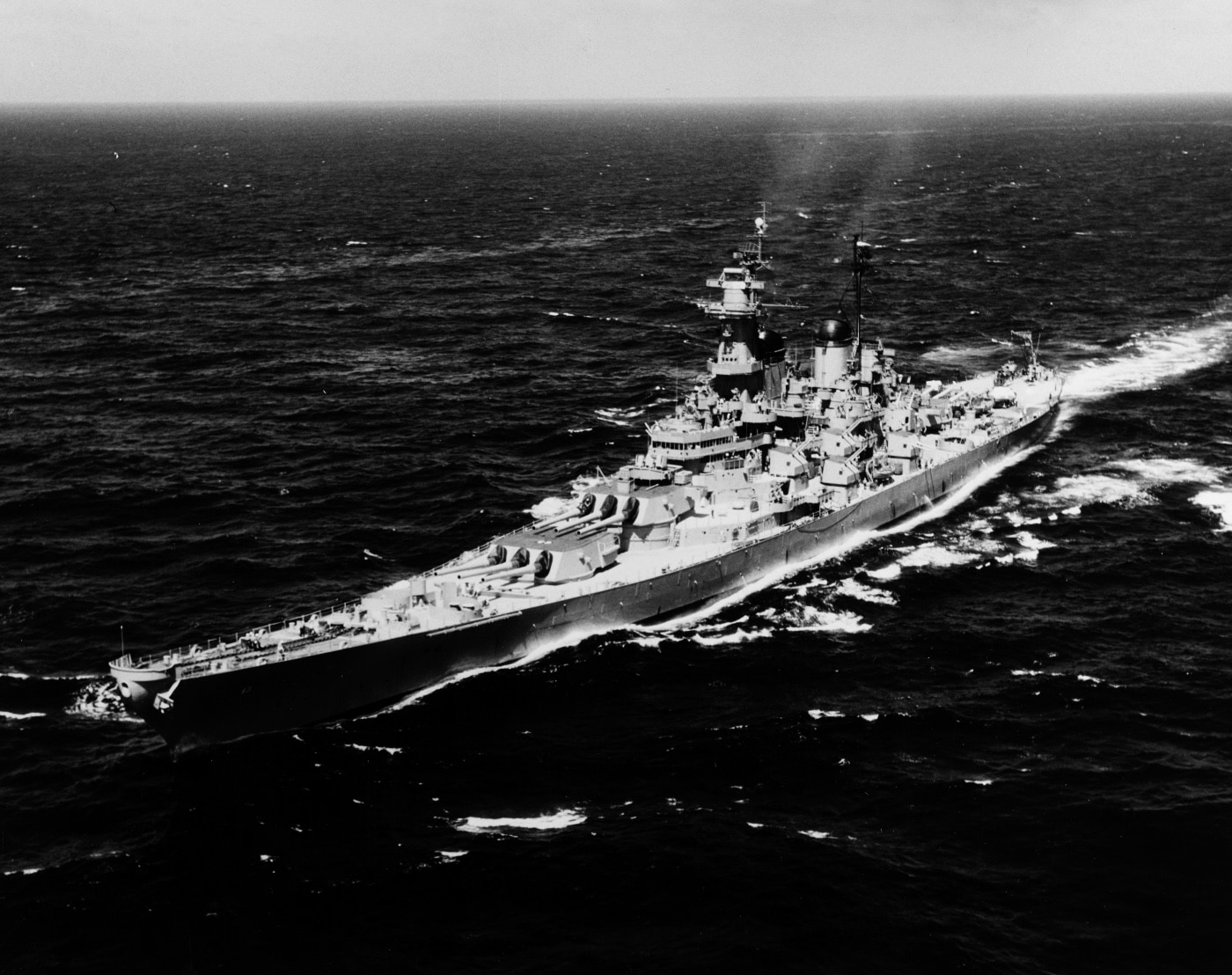
USSMissouri(BB-63) underway at sea during fleet maneuvers in March 1950. TheMissouriwas one of fourIowa-class battleships that entered service. Image: U.S. Navy
Generations of sailors crewed their decks and manned their guns in hostile waters across five decades.
This is a small part of their story.
What Were theIowa-Class Battleships?
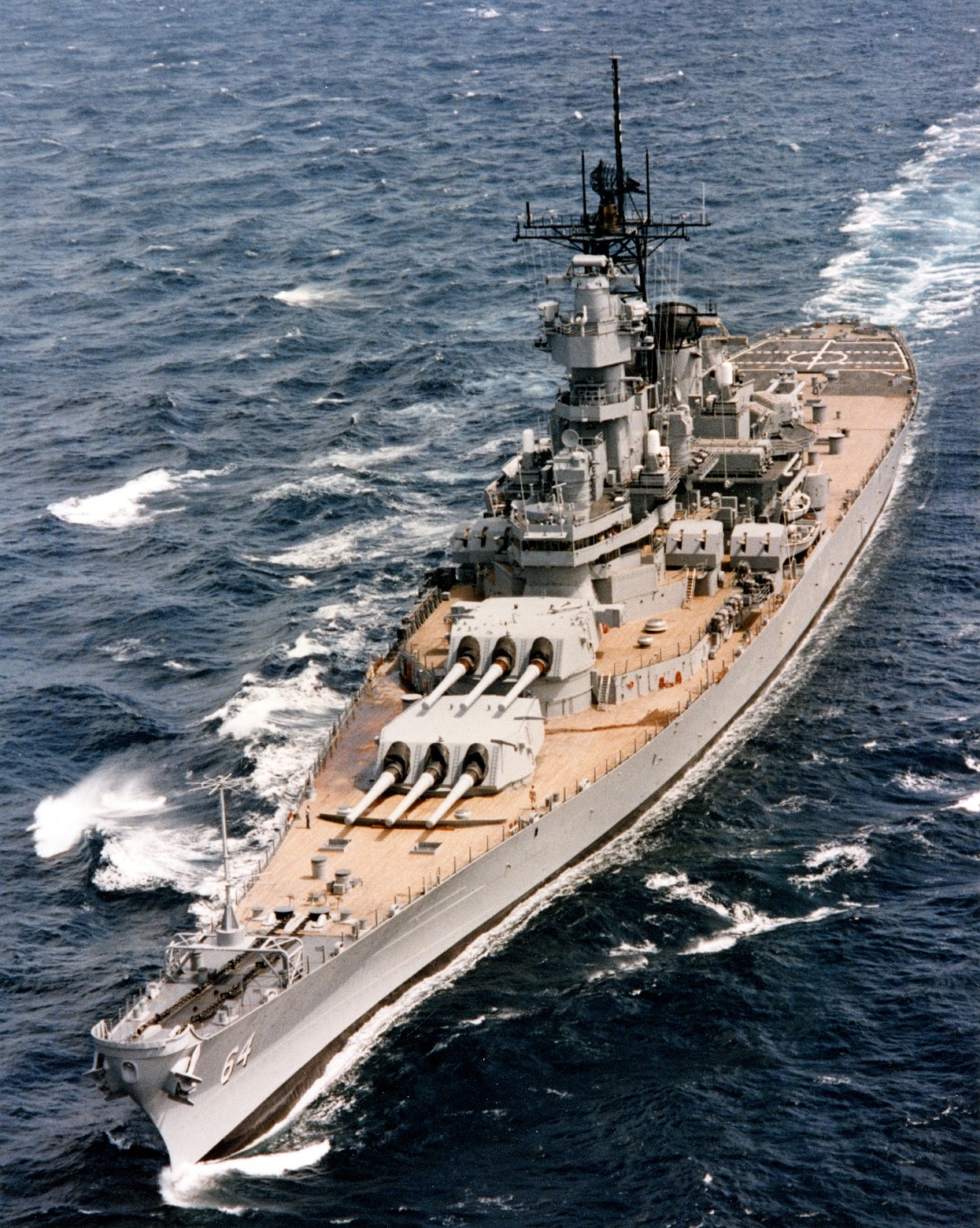
The USSWisconsin(BB-64) underway after its return to active duty in 1988. All 20mm and 40mm guns had been removed, as had some of the 5″ guns. Image: U.S. Navy
Iowa-class battleships were the last battleships ever built by the United States.
Constructed during World War II, the ships were designed to go toe-to-toe with the Imperial Japanese Navy.
A total of six ships were planned, with four delivered before VJ Day.
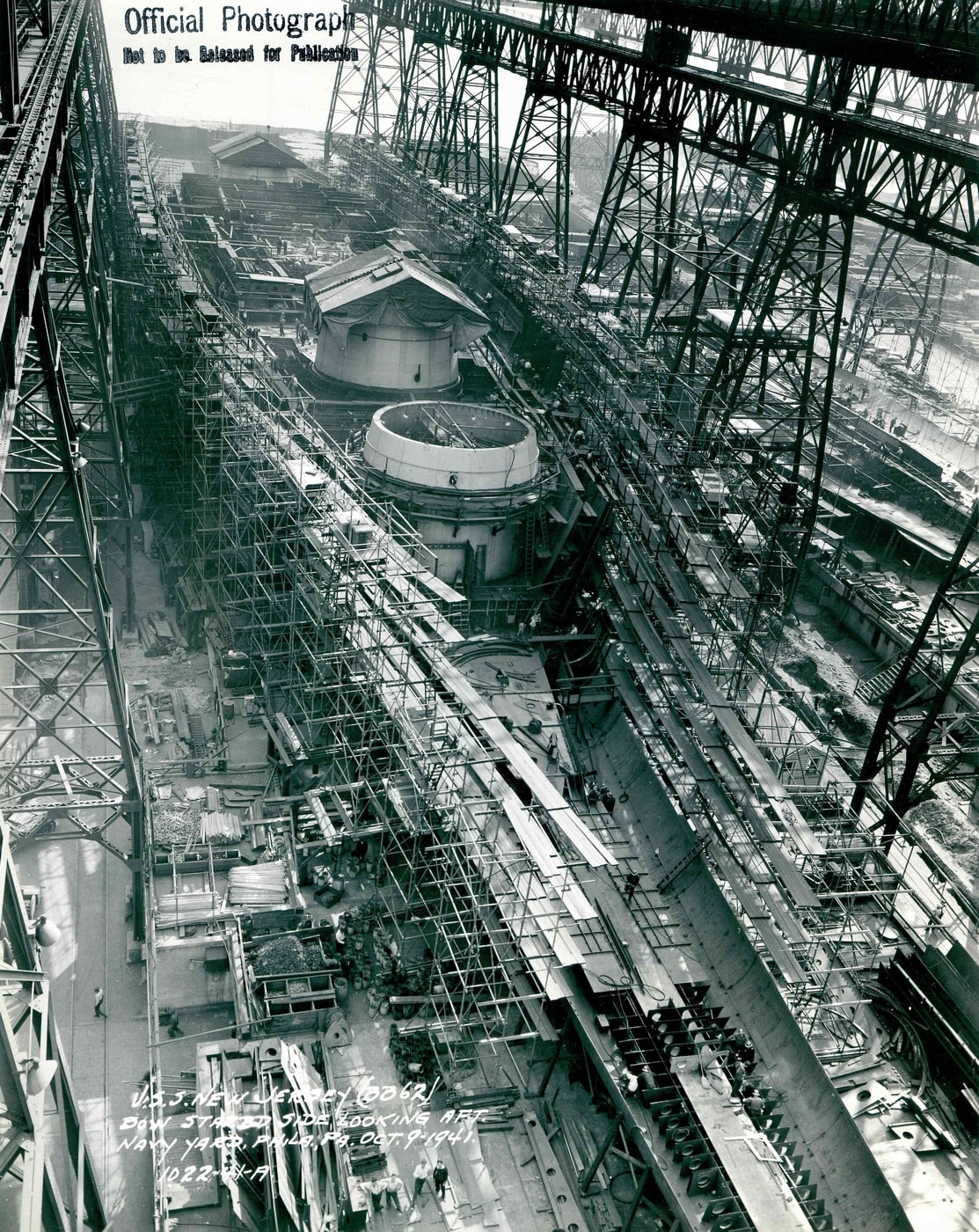
This October 1941 photograph shows the USSNew Jersey(BB-62) under construction. In less than two months, the United States would enter World War II and need all of the Iowa-class ships. Image: NARA
The two that were still under construction were never completed.
The completed ships of theIowa-class were as follows:
The uncompleted ships were to be theIllinoisandKentucky.
The partially built hulls of both were scrapped in the 1950s.
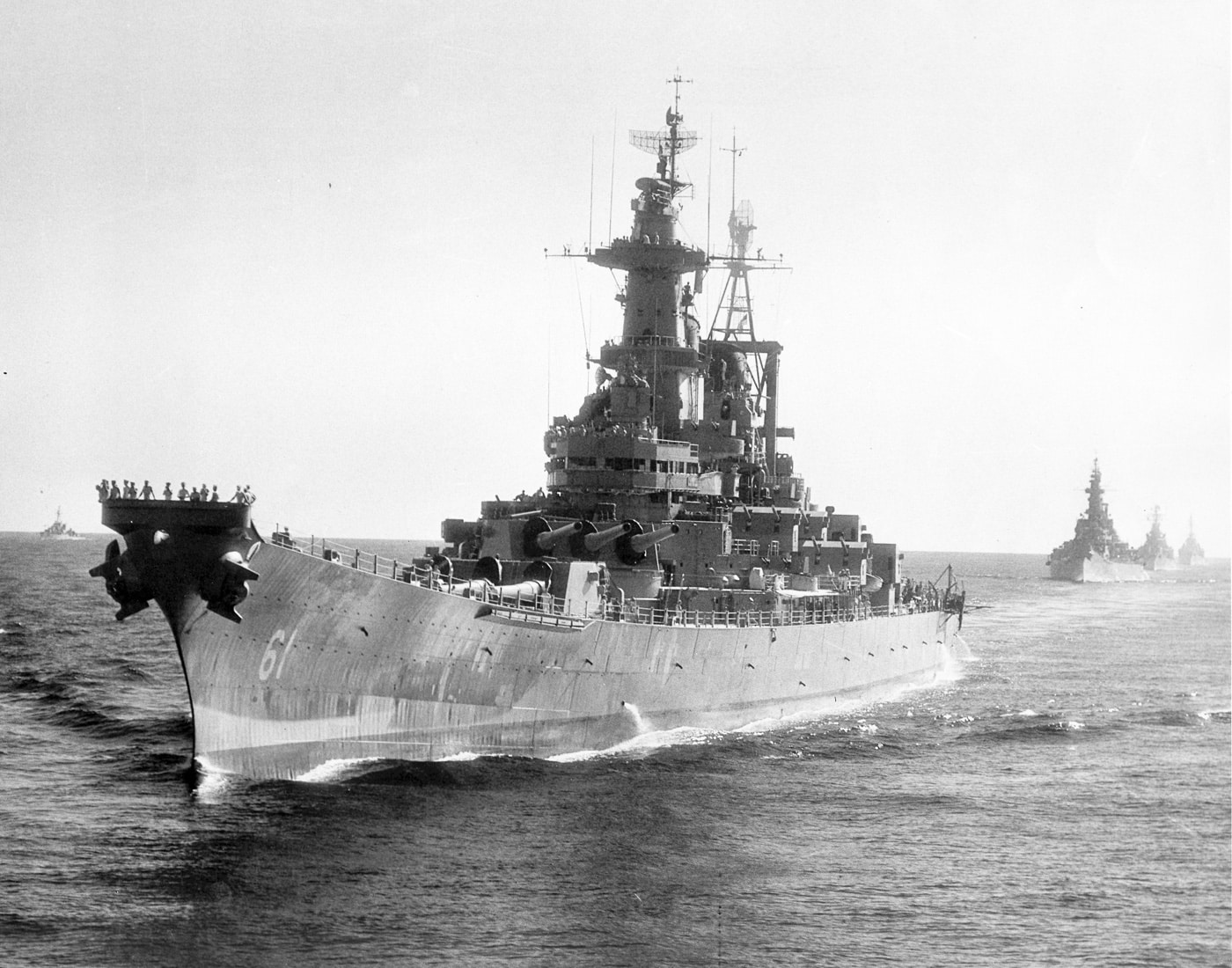
The USSIowa(BB-61) underway on August 3, 1957. The battleship USSWisconsinfollows closely astern with the USSBoston(CAG-1) and USSAlbany(CA-123) farther astern. Image: U.S. Navy
However, the USSIowaand its sister ships were the most advanced and fastest of them.
Speed Is the Key
TheIowa-class ships were not lumbering dreadnaughts reminiscent of the First World War.
Unofficially, the battleships could do a little better.
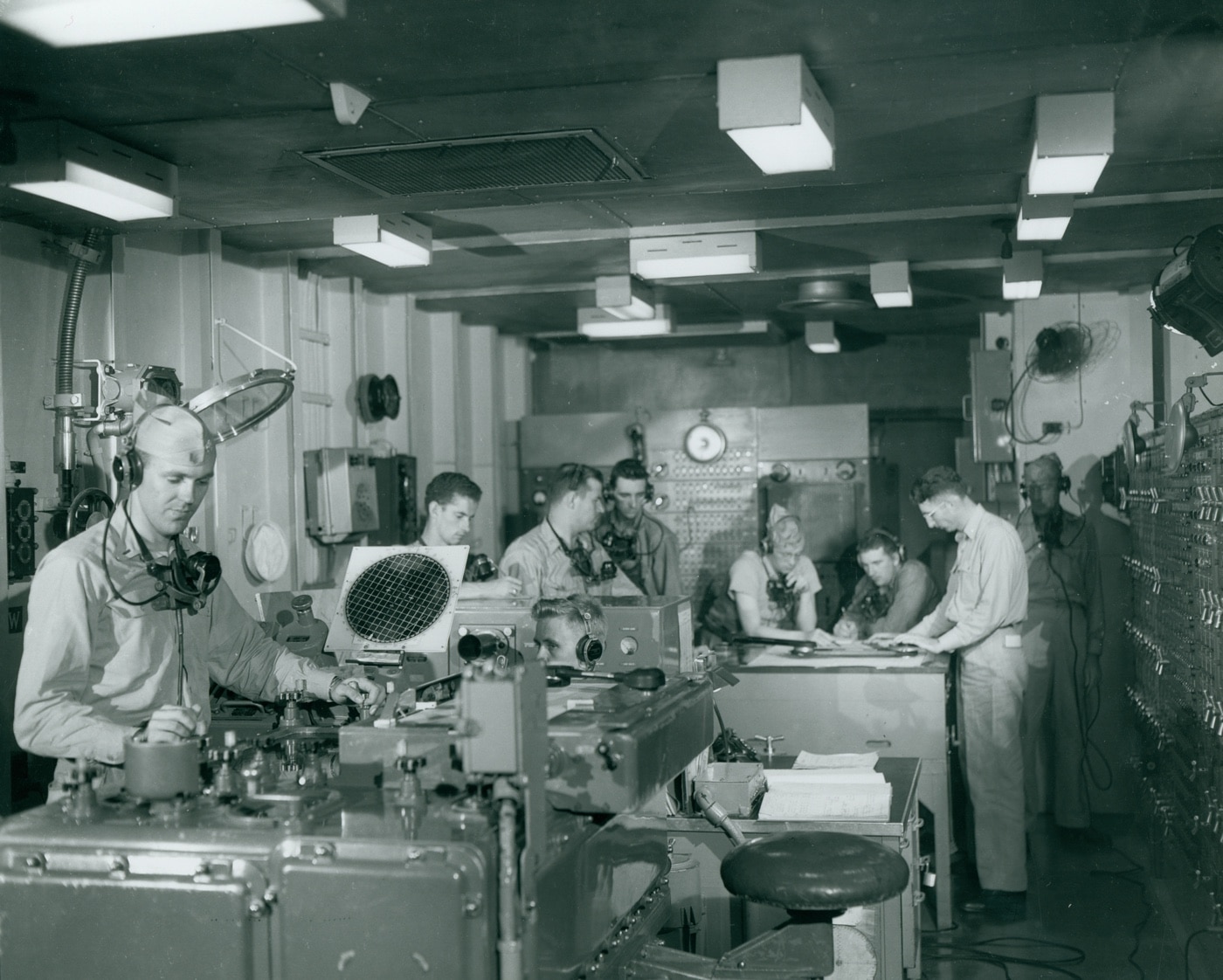
The USSMissouri‘s main battery plotting room during operations off the Korean coast on September 17, 1950. Image: U.S. Navy
Powerful Guns
Without a doubt, the three main turrets of theIowa-class ships draw the most attention.
Its easy to understand why.
Each of these heavily armored turrets had three 16 guns that dominated the ships profile.
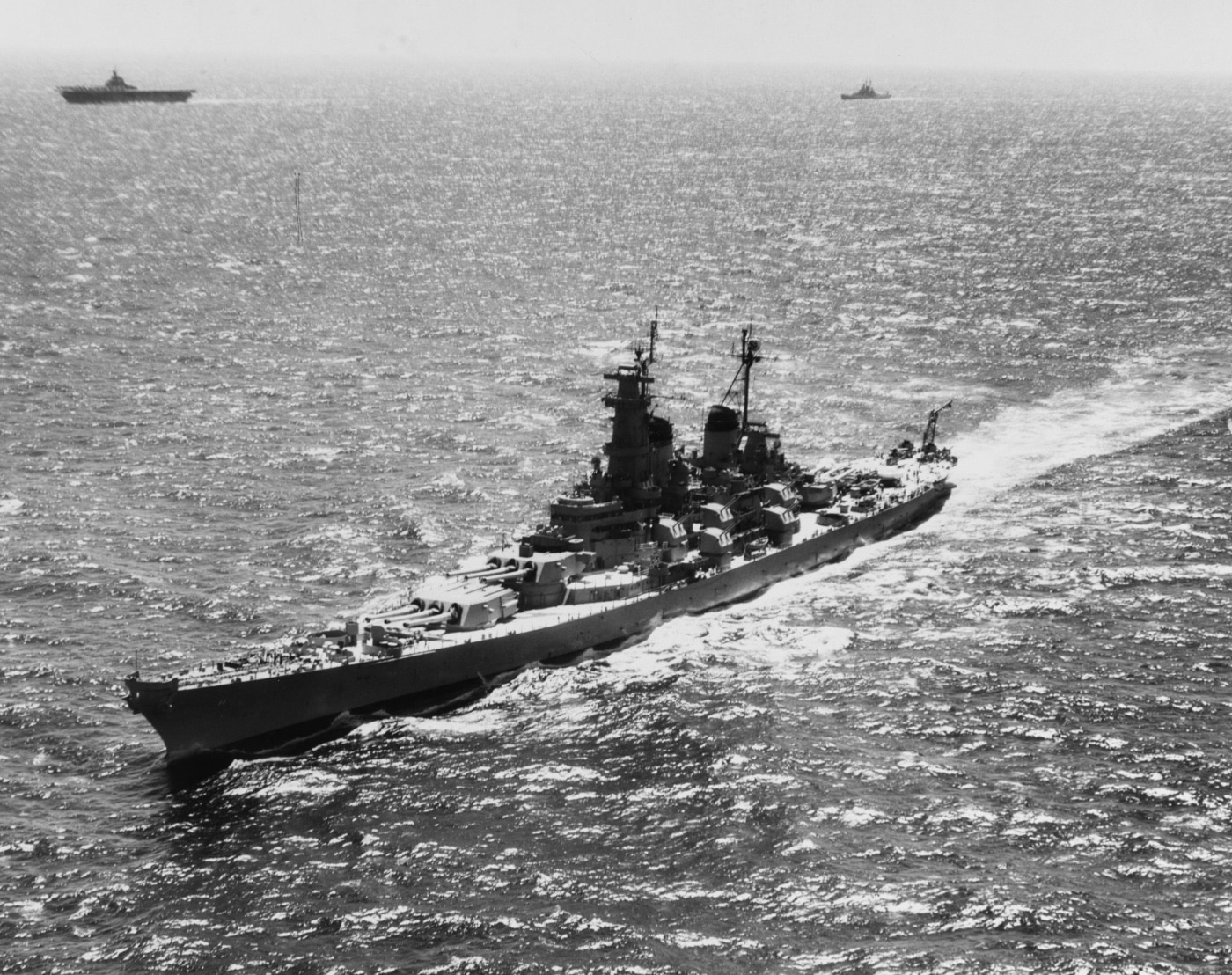
Iowa-class battleships were capable of escorting the Navy’s fast aircraft carriers. Here, the USSMissourioperates as part of Task Group 22.1 in 1950. An aircraft carrier steams to its starboard. Image: U.S. Navy
The guns were remarkable.
Muzzle velocity and range varied.
The heaviest armor-piercing shells could hit 2,500 feet per second (fps) while the lighter High Capacity Mk.
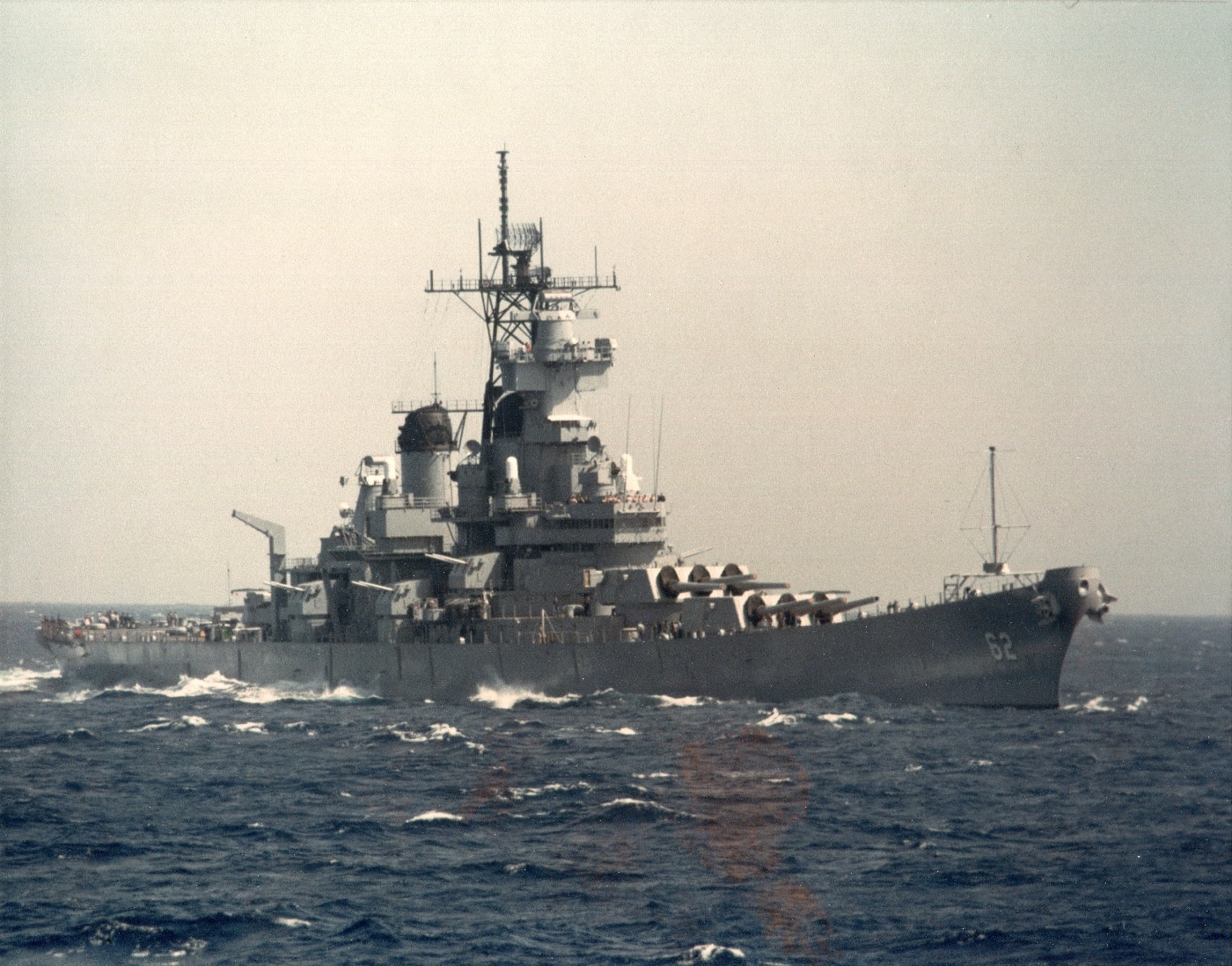
USSNew Jerseyset the world record for fastest battleship in 1968. It is seen here during her sea trials off the Pacific Coast in 1982. Image: PH2 Shayna Brennan/U.S. Navy
13 (bursting shell) approached 2,700 fps.
Each gun was more than 65 long and weighed nearly 268,000 lbs.
These things were massive.
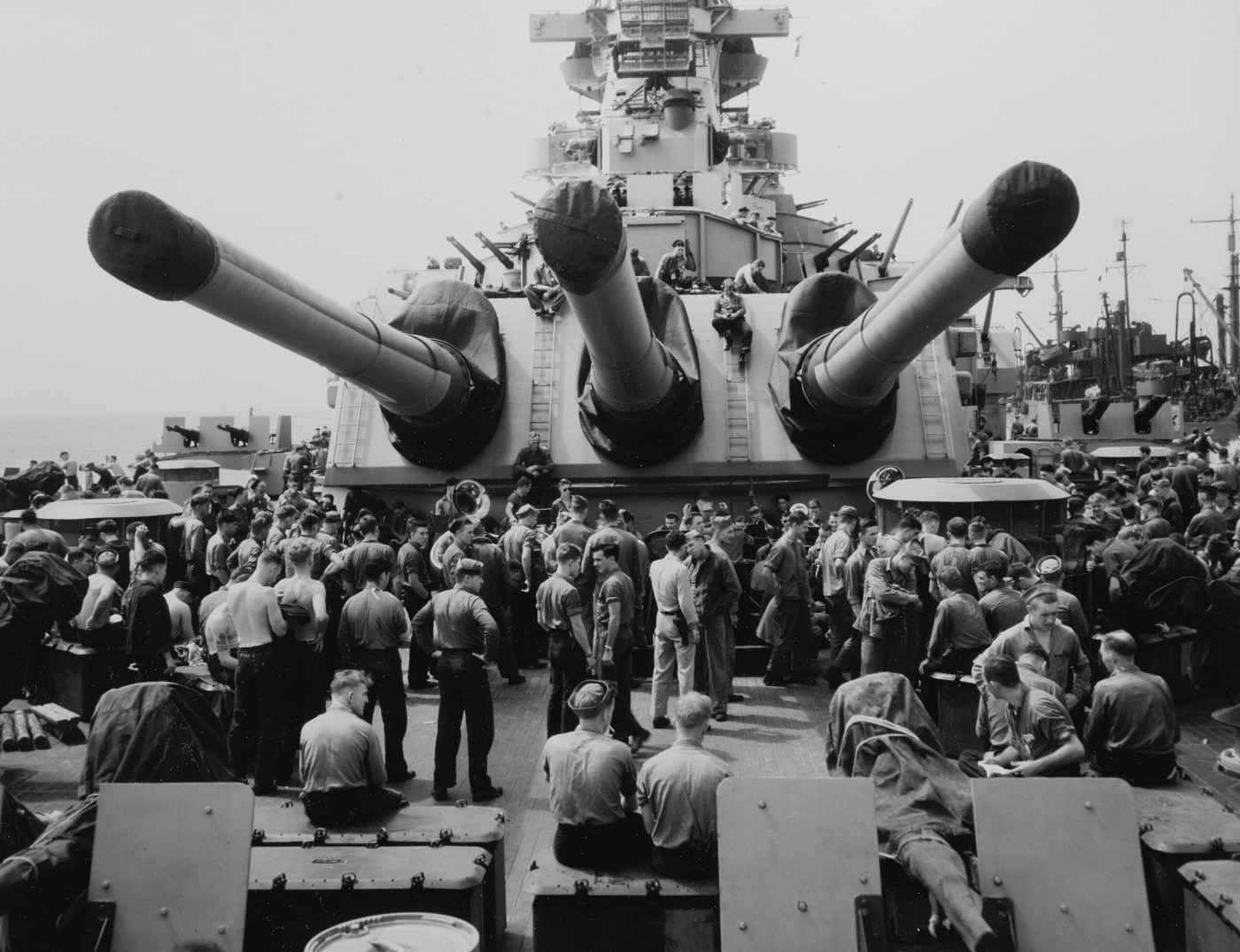
You can gain some appreciation for the size of the main guns from this photo of sailors gathered for a concert near Turret #1 on the USSWisconsin, circa 1945. Image: U.S. Navy
Impressively, each gun could be independently elevated and fired.
Blanketing a beachs fortifications ahead of an amphibious landing was just one use for this feature.
The Nuclear Option
The massive 16 guns were also nuclear capable.
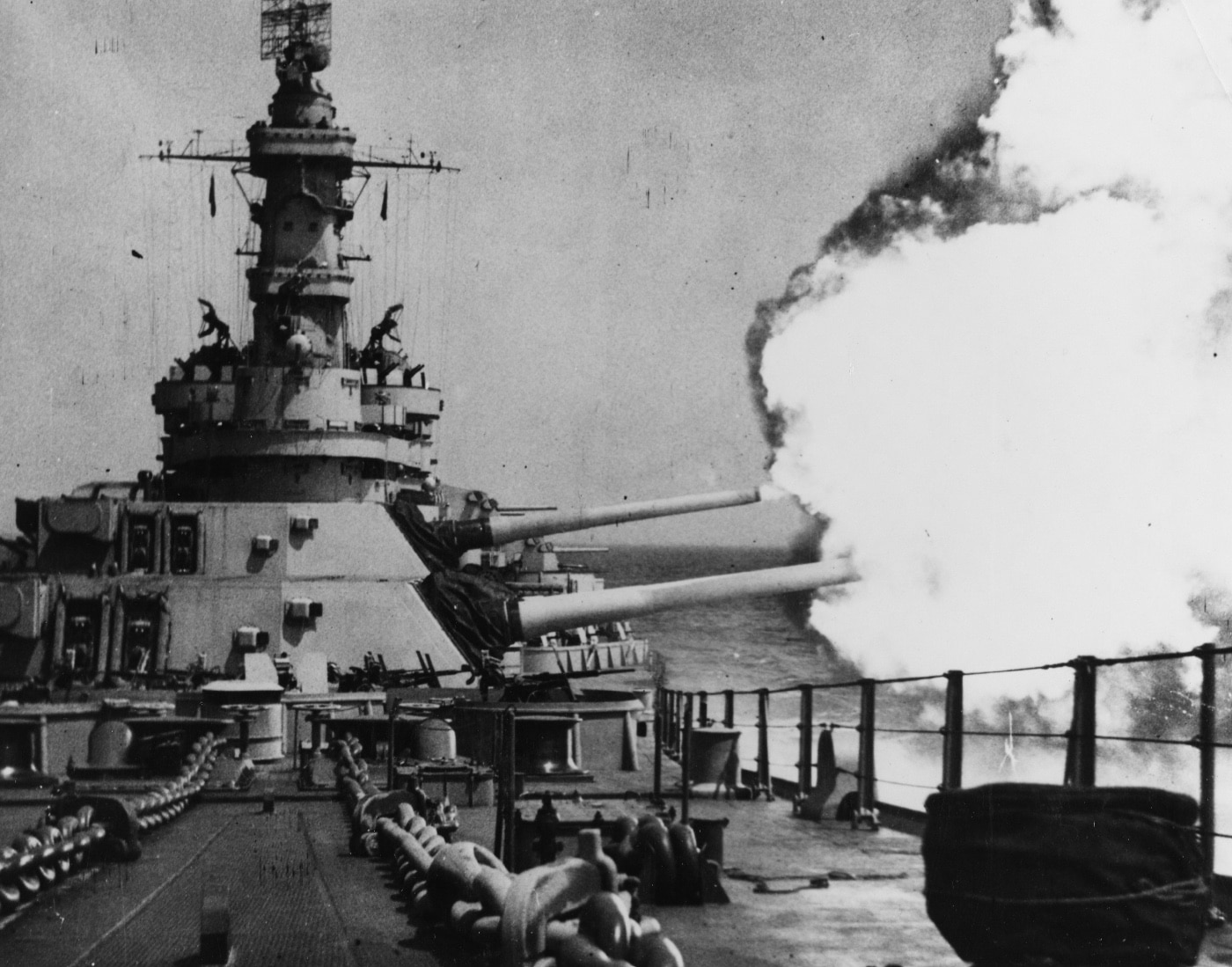
The USSIowafires her 16″ guns during unknown operations in 1943. Image: U.S. Navy
Beginning in 1956, theIowa-class battleships had Mark 23 Katie shells available.
These nuclear artillery shells had a yield of about 15-20 kilotons.
Consolidating the Mark 23s in a single location likely helped to simplify the security arrangements on the ship.
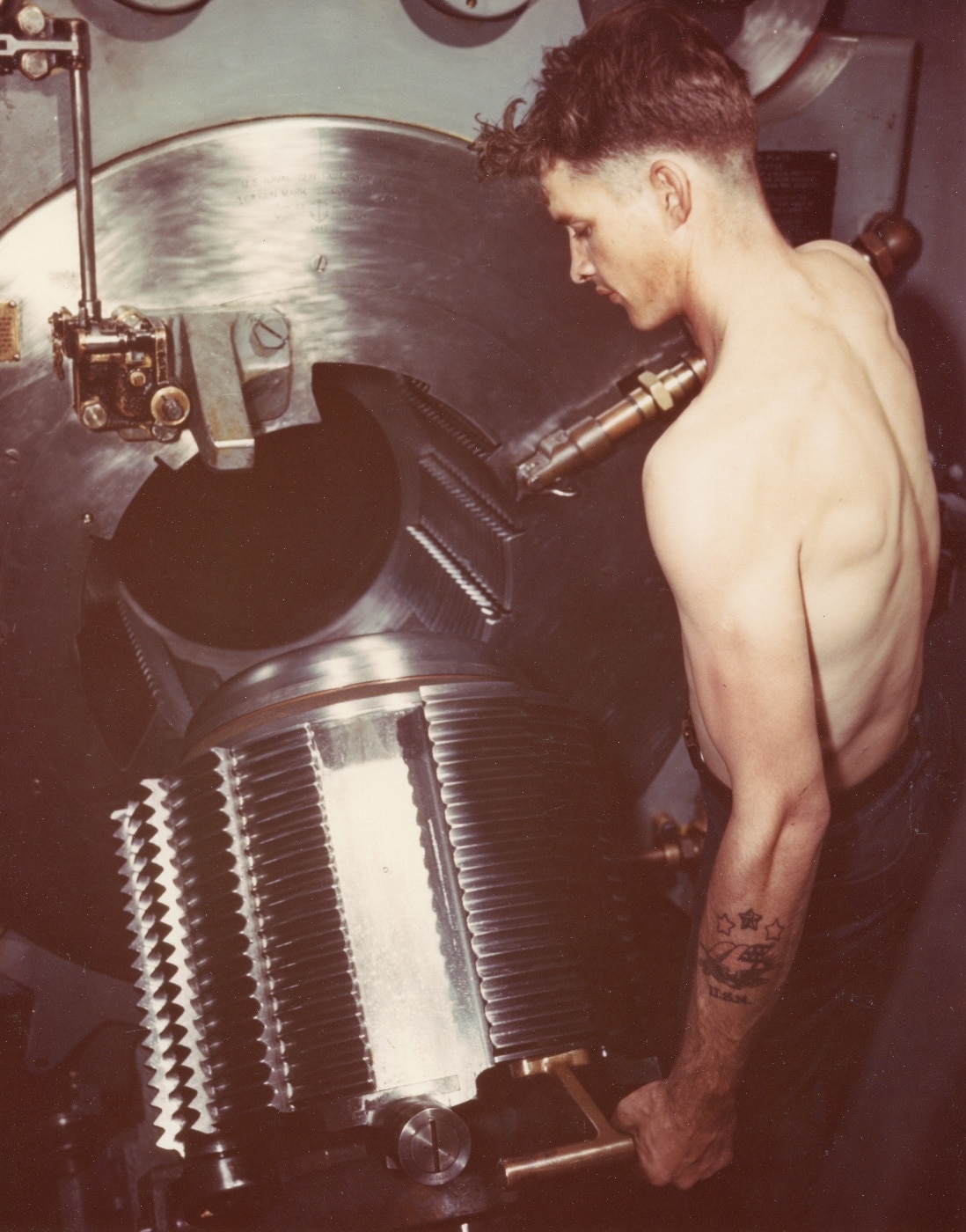
Fire Controlman First Class E.M. Smith opens his gun’s breech plug during the USSMissouri’sshakedown cruise in August 1944. Image: U.S. Navy
Of course, the Navy is silent on the specifics.
Three of theIowa-class ships were modified for the use of the Mark 23 munitions.
The United States military is understandably tight-lipped about its nuclear capabilities.
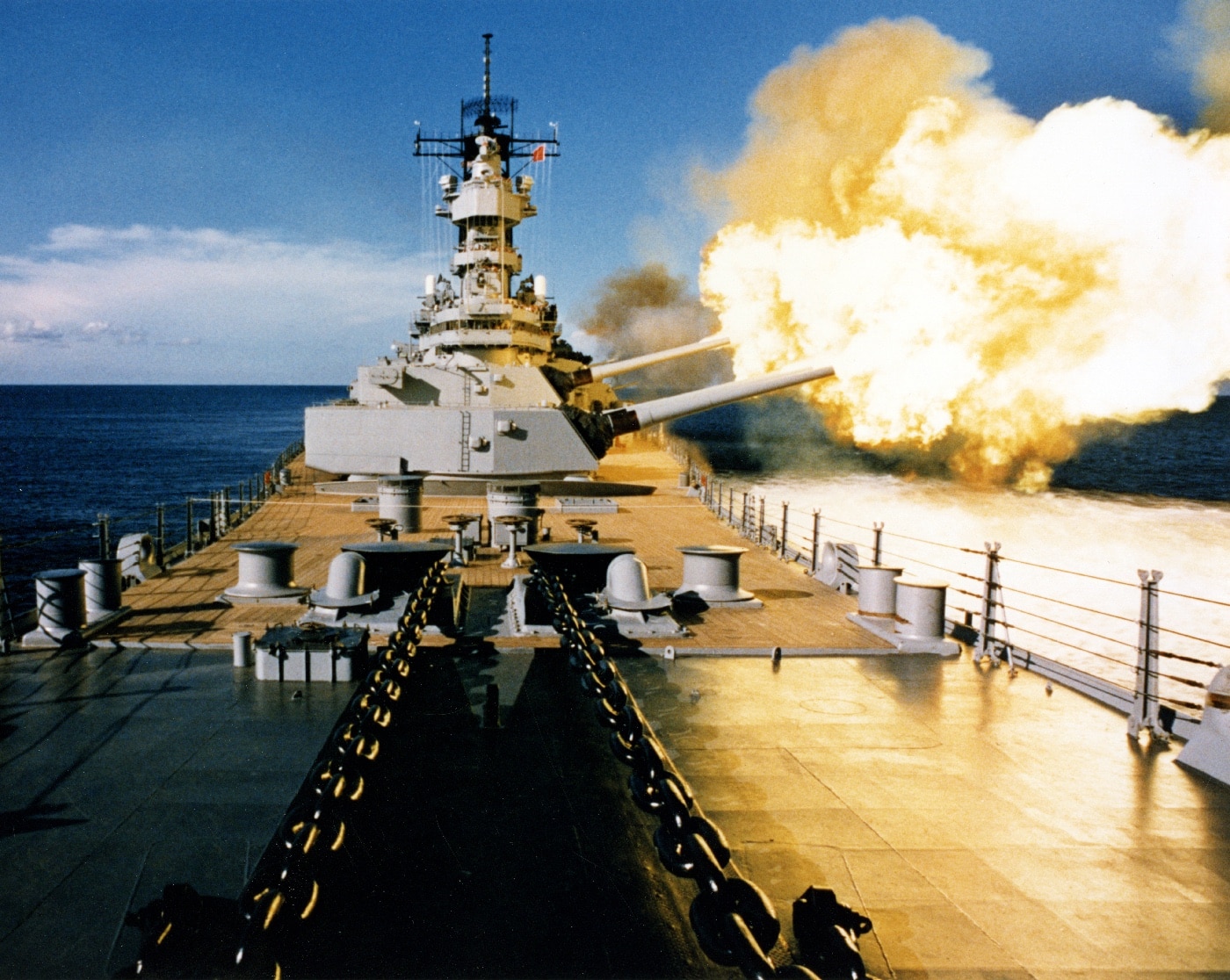
The USSWisconsinfires a broadside to port with her 16″ and 5″ guns after being recommissioned in the 1980s. Official U.S. Navy
So, we dont know for certain if any of the Mk 23 shells deployed with the battleships.
When theIowa-class battleships were built, they were equipped with 20 5 guns that packed a substantial punch.
These were the same 5 guns that proved successful on U.S. Navy destroyers.
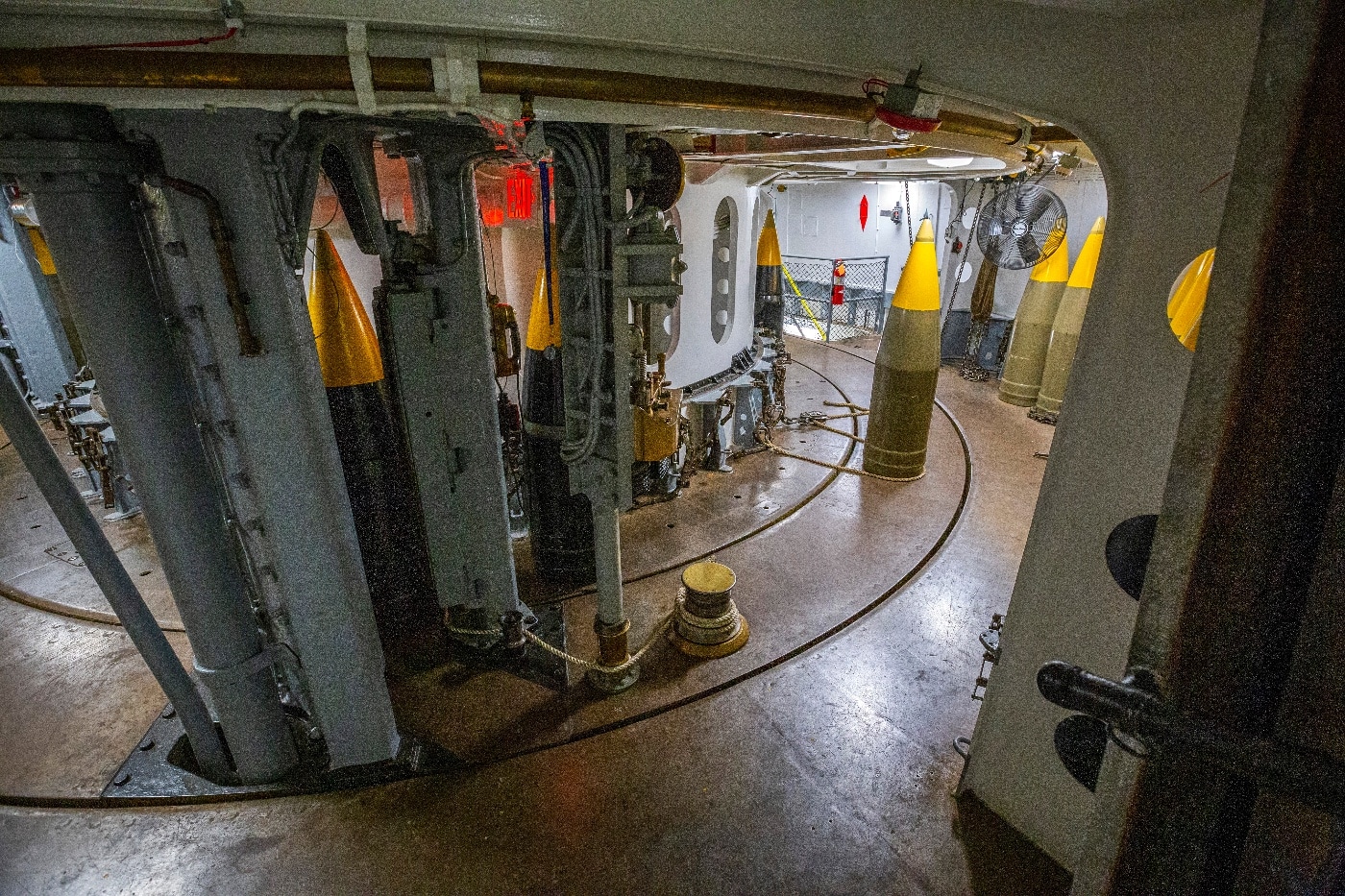
Shown is a view of the shell deck below a 16″ turret on the USSNew Jerseybattleship. Nuclear projectiles would have been stored with Turret #2. Image: Mark C. Olsen
There were five mounts per side with two guns in each mount.
The guns were accurate and reliable.
Equally important was their dual-purpose nature.
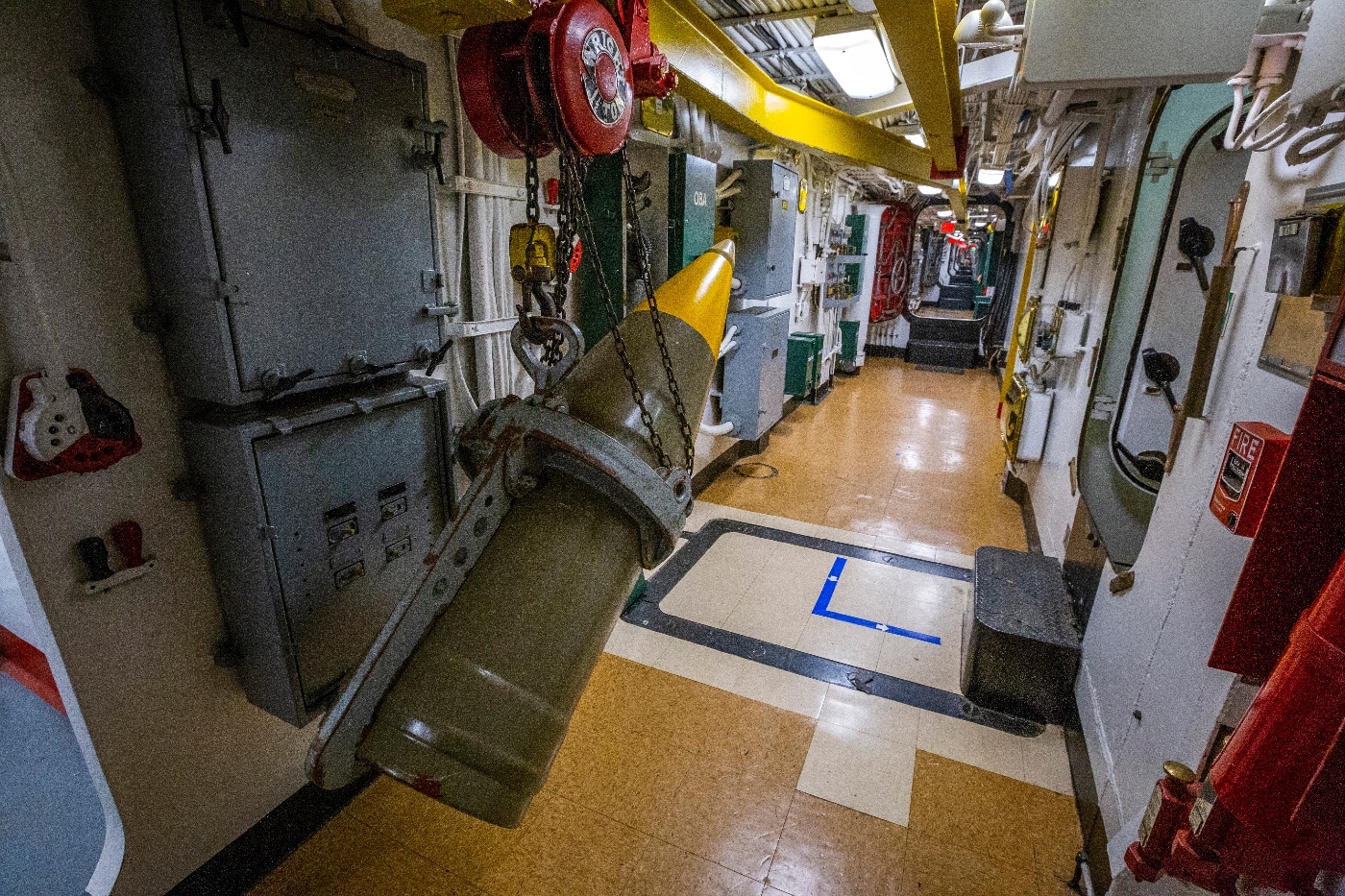
If needed, Mark 23 nuclear shells could be transported to other turrets using the internal rail system that ran between the 16″ guns. Image: Mark C. Olsen
Additional AA work was handled by the ships 20mm and 40mm guns.
When the ships were commissioned, each was fitted with 49 20mm mounts and 20 quad 40mm mounts.
World War II
Unsurprisingly, all fourIowa-class battleships saw action in the Pacific Theater.
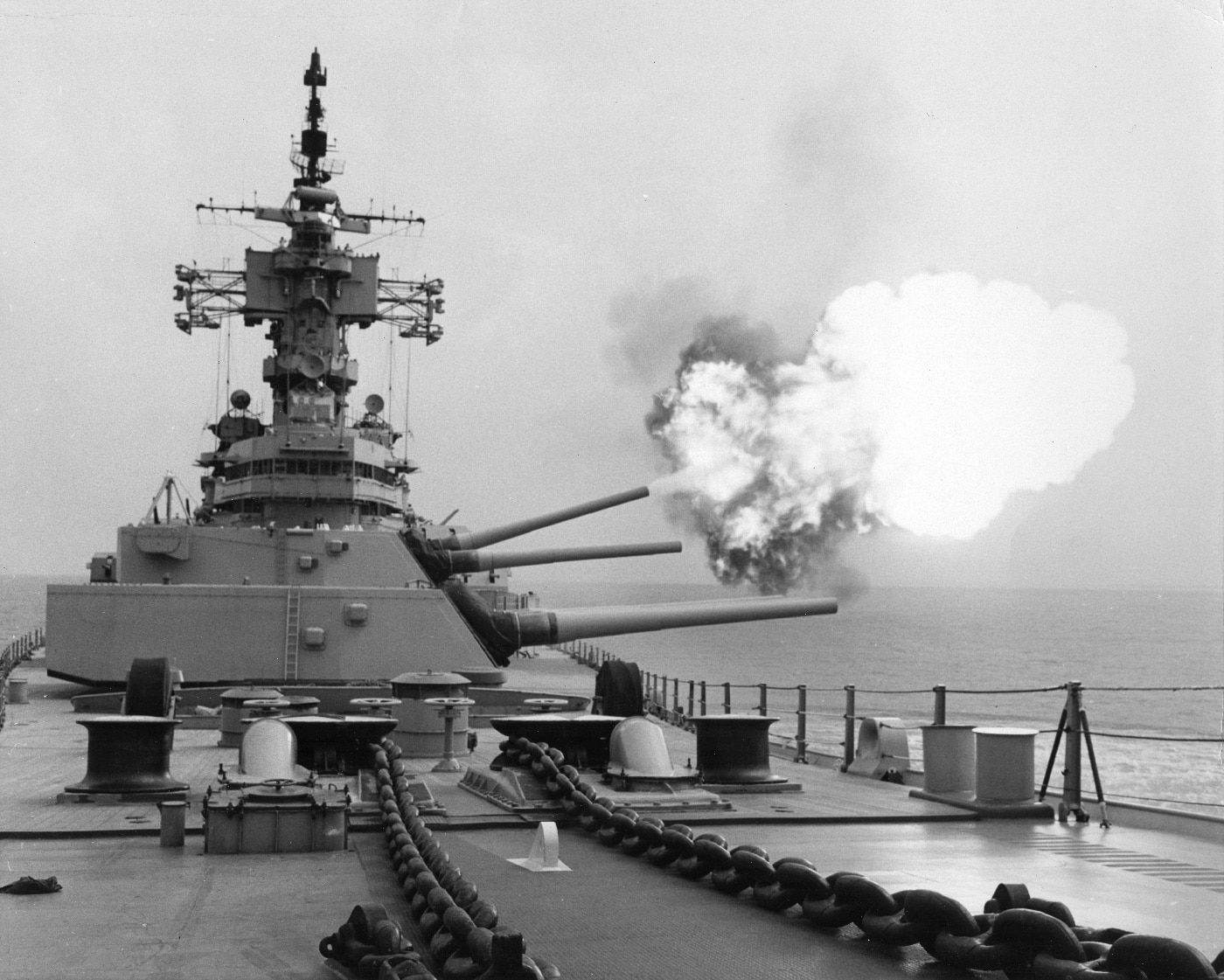
In March 1969, the USSNew Jerseyfires one 16″ gun of Turret #2 against a target in Vietnam. The Mark 23 “Katie” shells would have been fired in the same fashion. Image: U.S. Navy
Due to their speed, the ships were frequently assigned as aircraft carrier escorts.
By the summer of 1945, the battleships were bombarding factories and other targets on the main Japanese islands.
It was onboard the USSMissourithat World War II finally ended.
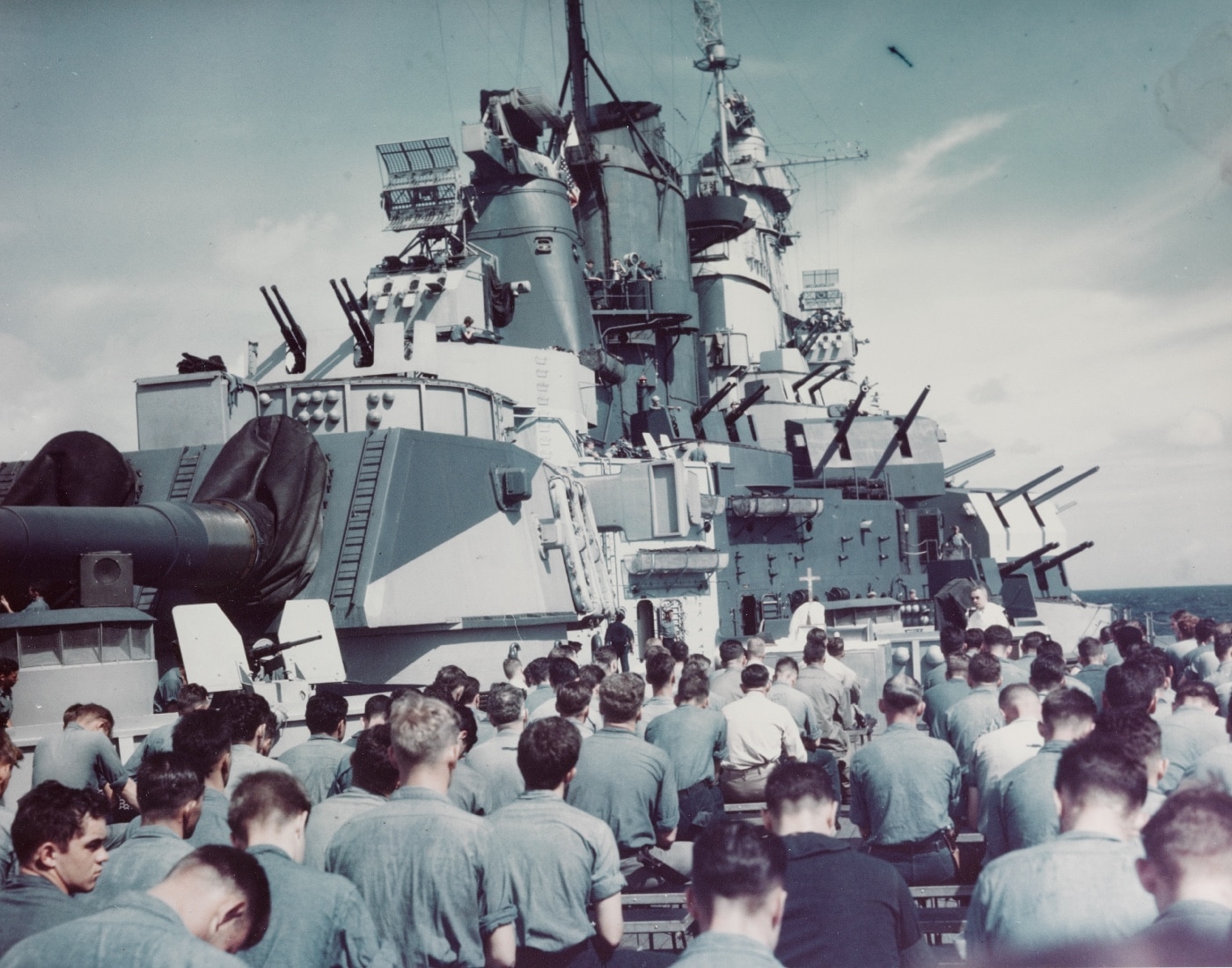
Sailors attend Mass on the deck of the USSIowain June 1944. Sporting the Measure 32 camouflage scheme, the ship’s 5″, 40mm and 20mm guns are plainly visible throughout the photo. Image: U.S. Navy
On the 15th, Emperor Hirohito announced Japans surrender.
To formalize the surrender, Gen. Douglas MacArthur and other Allied representatives met Japanese representatives on September 2.
In Tokyo Harbor, all representatives convened on the deck of theMissouri.
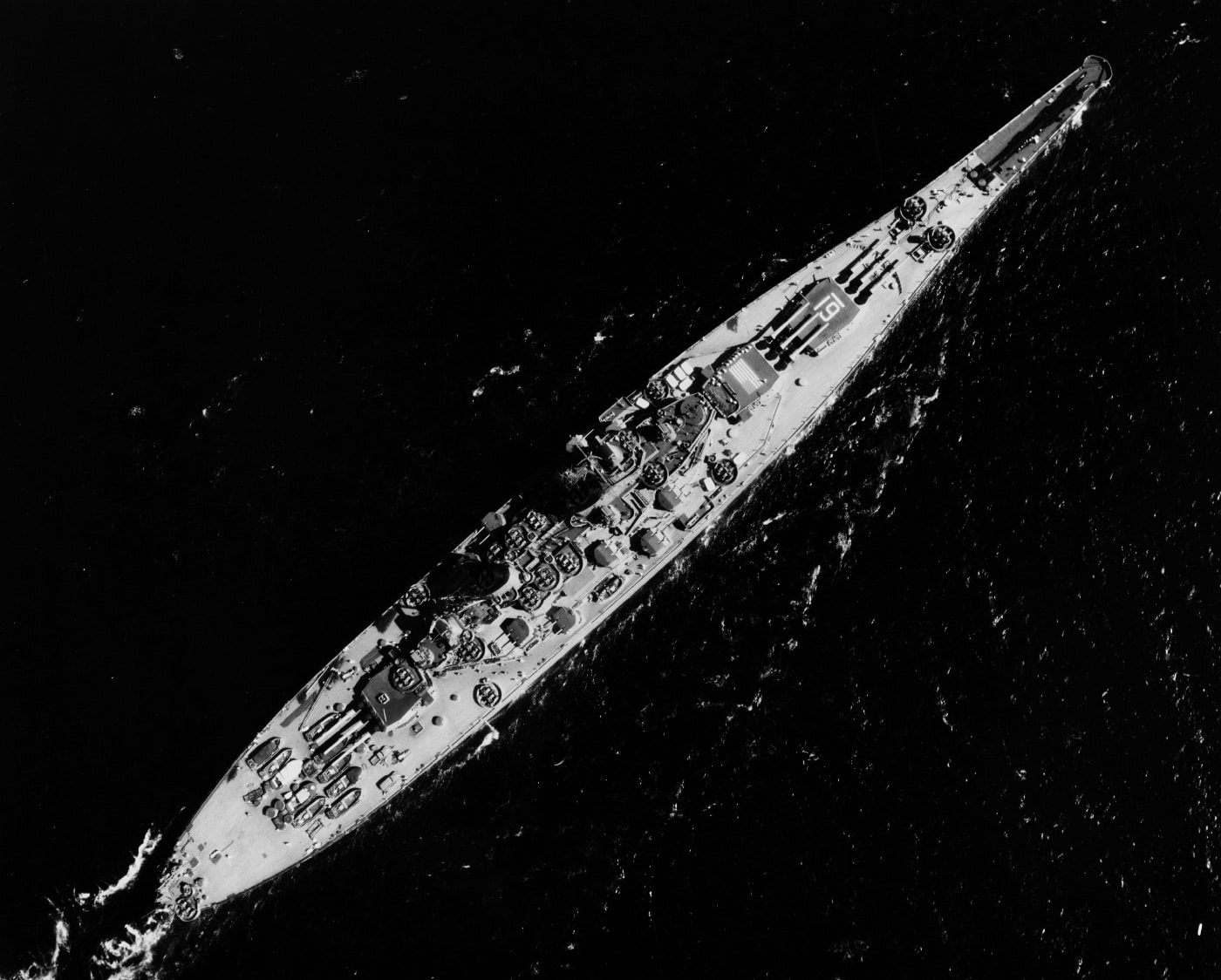
In this overhead photo of the USSIowa, you can see the 40mm and 5″ guns that populate the ship’s surface. The 20mm gun mounts had been removed prior to this photograph. Image: U.S. Navy
It was there that Japans representatives signed the formal surrender.
For the first time in many years, the region was at peace.
Unfortunately, that peace would not be long lasting, and theIowa-class ships would be called on once again.
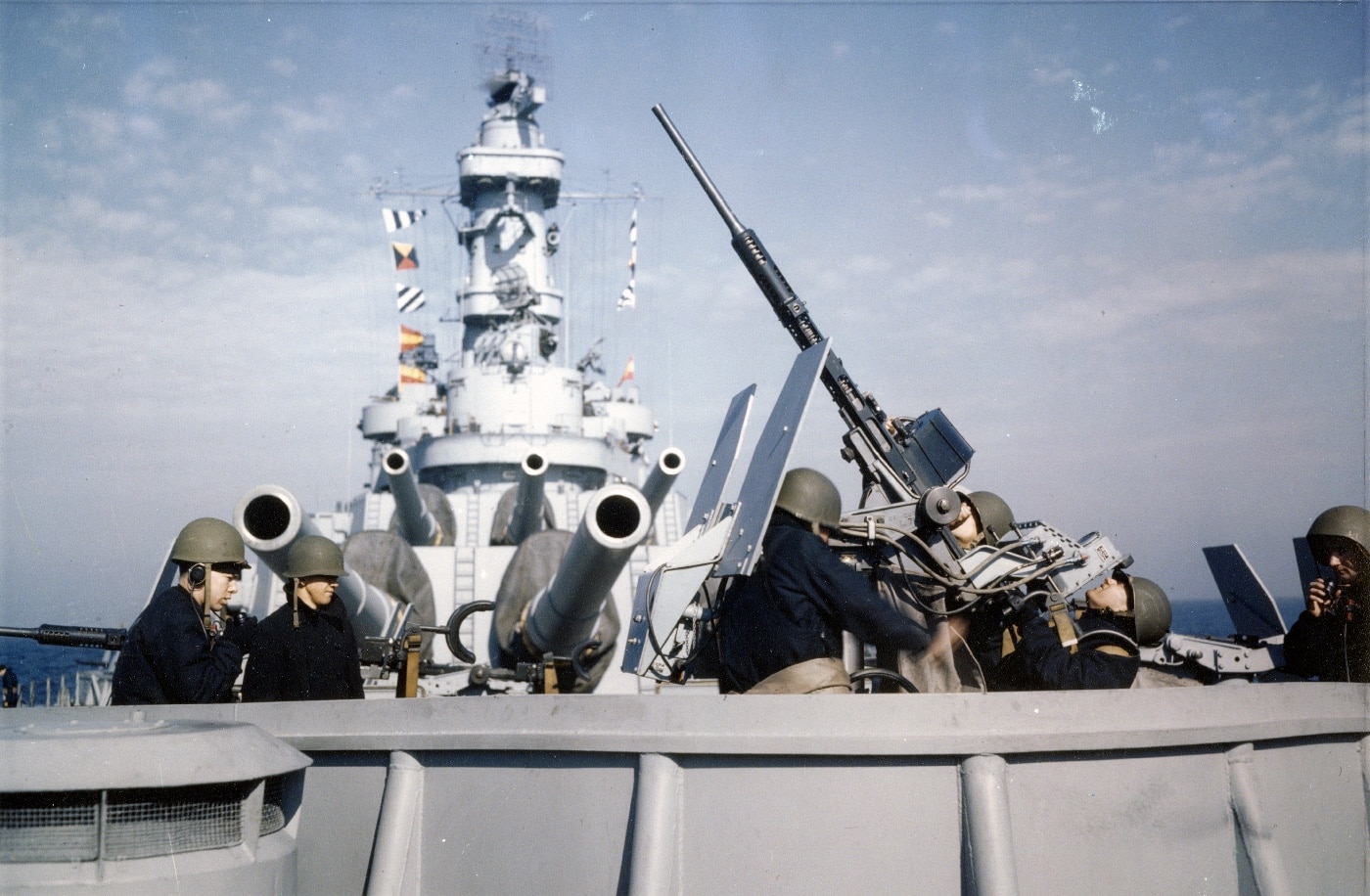
A 20mm gun crew in action on the USSIowabattleship’s forecastle, probably during her shakedown period in 1943. The gunner uses a Mark 14 lead-computing gunsight. Image: U.S. Navy
During the war, theMissouriearned five battle stars.
Eventually, allIowa-class battleships would be reactivated and deploy to the Korean Peninsula.
The USSNew Jerseywould relieve theMissouri.
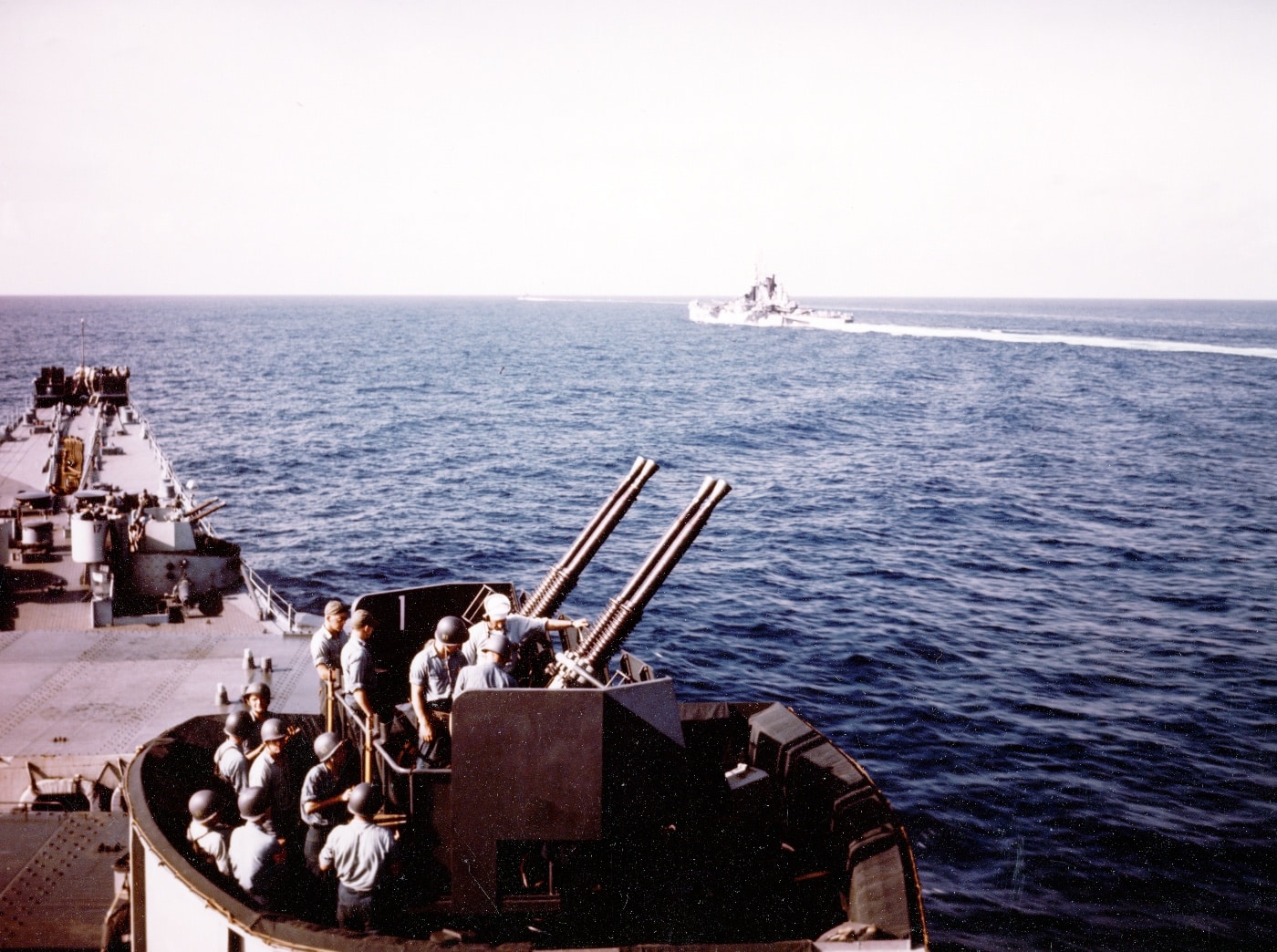
In 1944, USSMissouricrewmen stand ready at their battle stations in the 40mm quad anti-aircraft gun mount atop Turret #2, during the battleship’s shakedown cruise. Image: U.S. Navy
In turn it was relieved by theIowafollowed by theWisconsin.
Each would earn battle stars in defense of the Republic of Korea (South Korea.)
TheNew Jerseywas refitted and recommissioned in 1968.
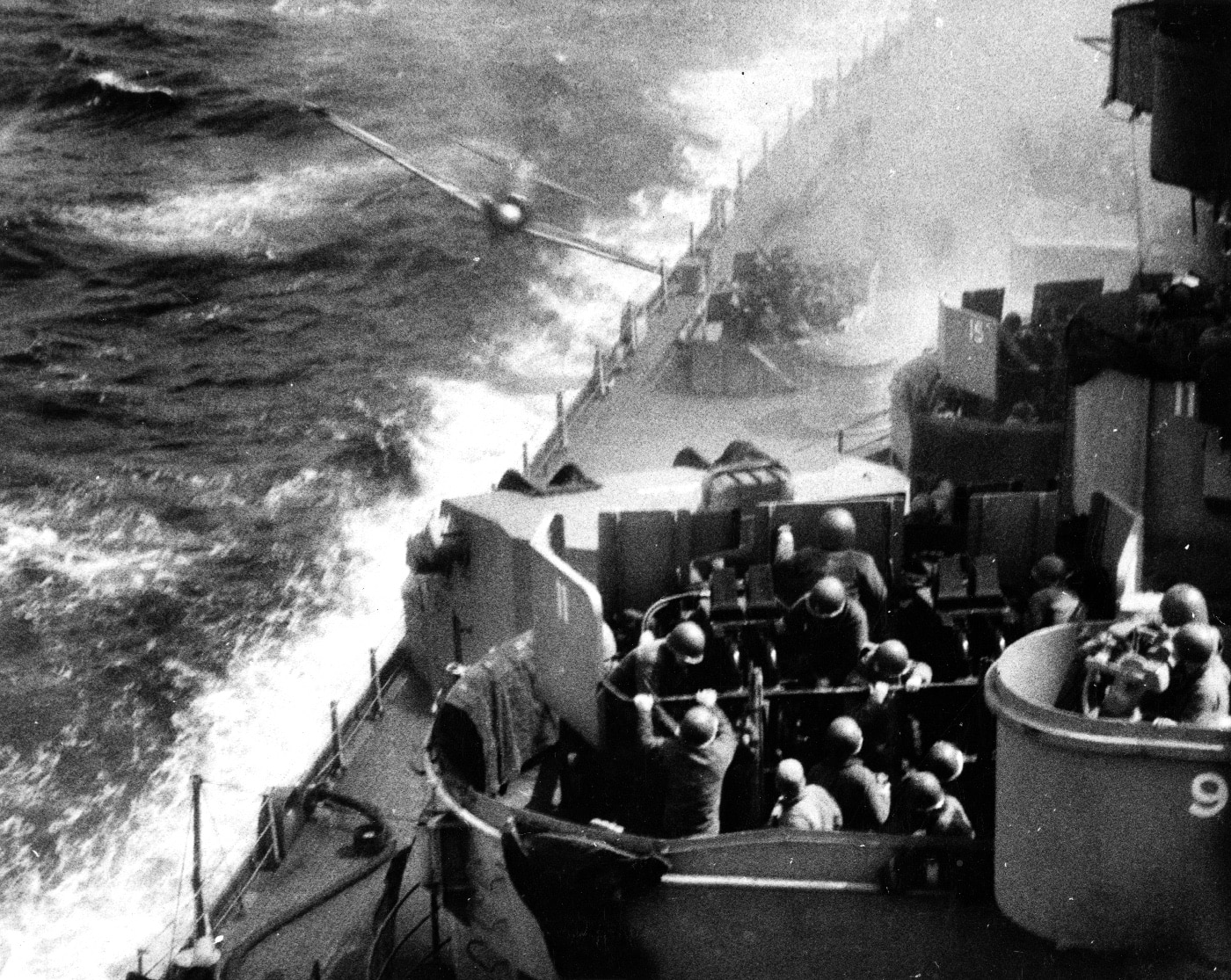
The USSMissouria split-second before being hit by a Japanese A6M Zero kamikaze during the Battle of Okinawa, 1945. A 40mm quad gun crew is in action in the lower foreground. Image: U.S. Navy
Afterward, theNew Jerseywas returned to the Mothball Fleet.
At the same time, the Soviet Union was flexing its military muscles.
In addition to growing the size of its combat forces, the Soviets introduced theKirov-class battlecruisers.
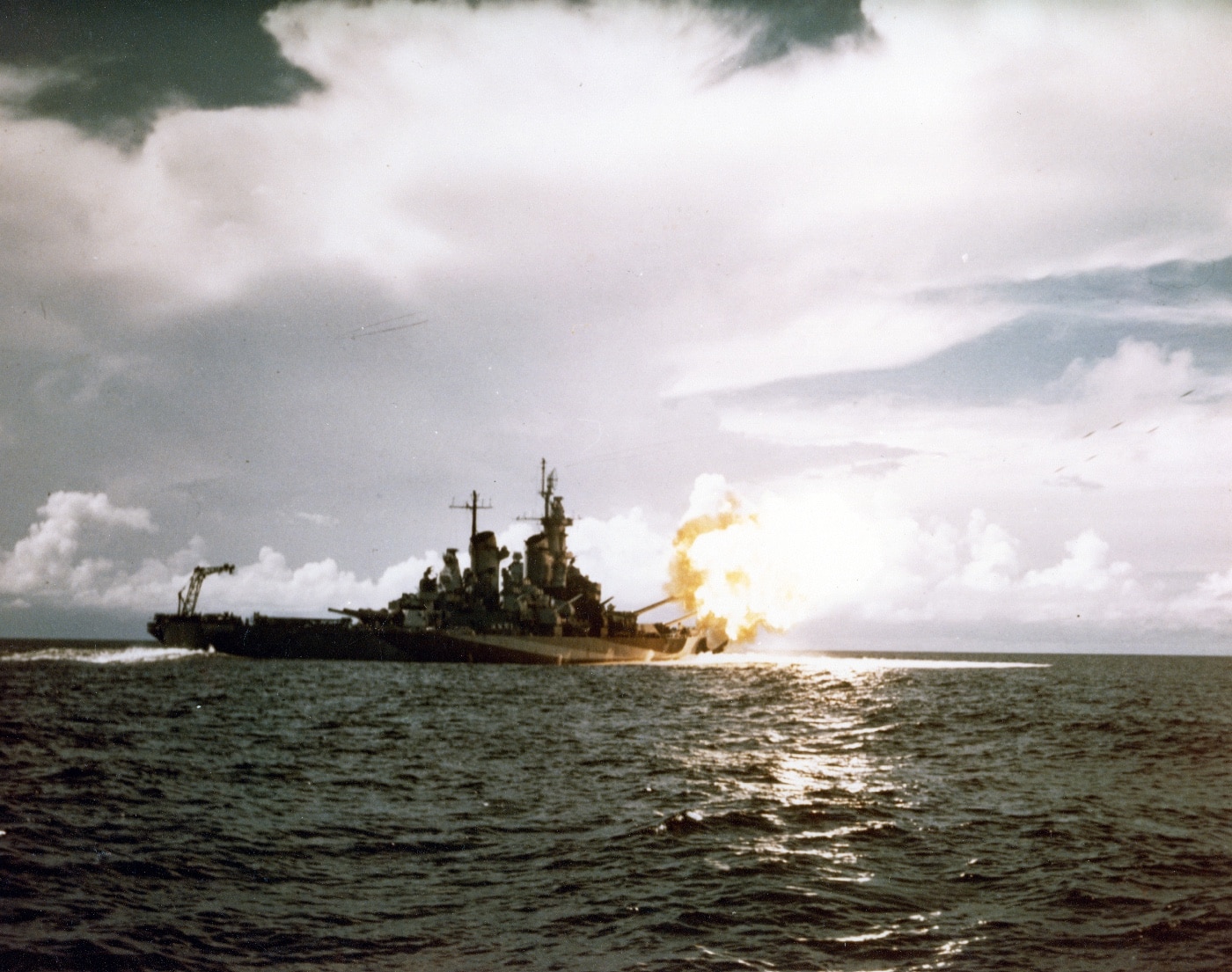
USSMissourifires a six-gun salvo from her forward turrets in August 1944. Six 16″ projectiles are visible in the air at the extreme right of the photo. Image: Arthur Stratham/U.S. Navy
TheKirov-class ships were the largest surface warfare ships put to sea since 1945.
Ronald Reagan was sworn in as president on January 20, 1981.
One of his stated goals was to invigorate the U.S. military.
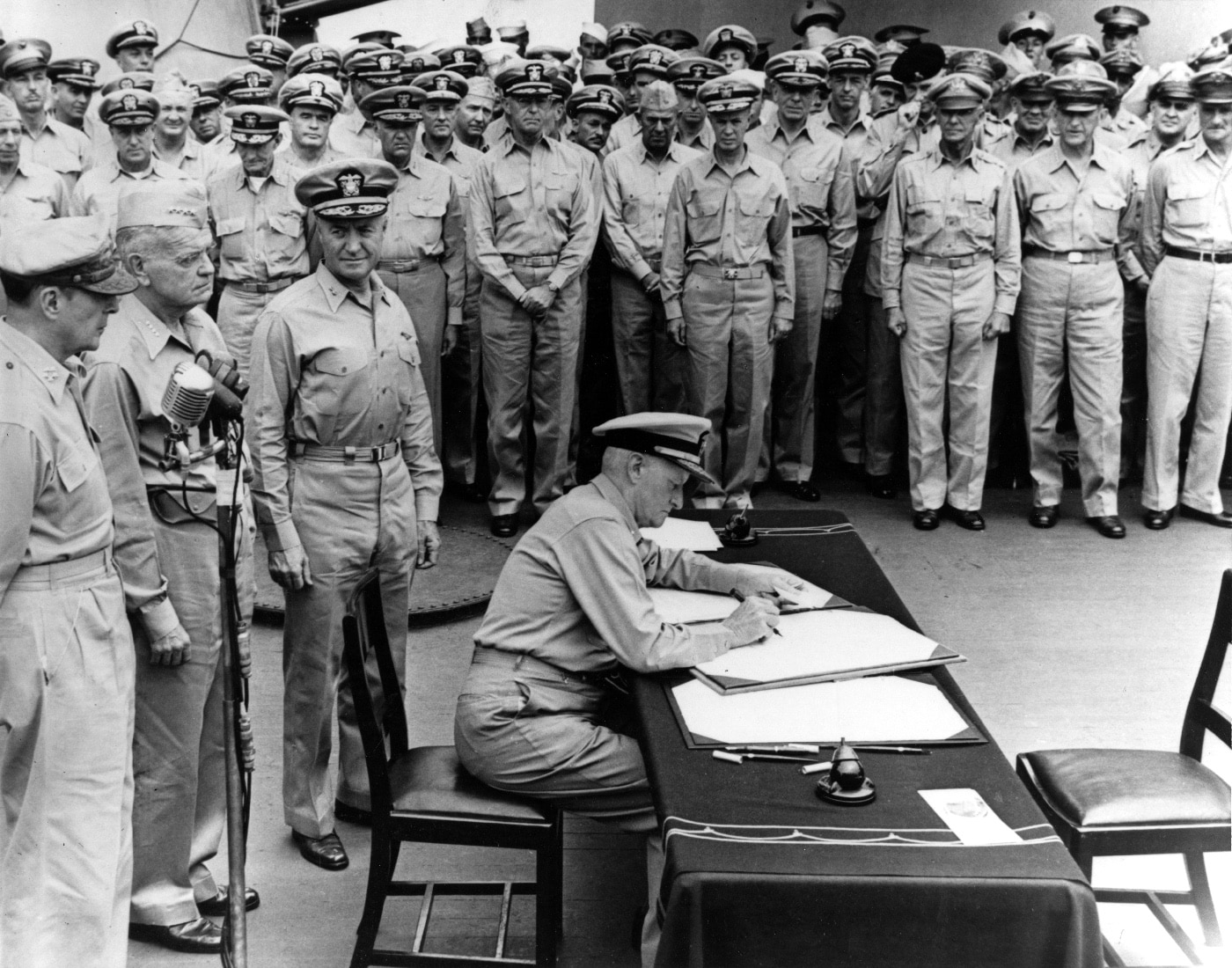
Fleet Adm. Chester Nimitz signs the Japanese Instrument of Surrender as a U.S. Representative. Behind him are Gen. Douglas MacArthur, Adm. William Halsey and Rear Adm. Forrest Sherman. Image: U.S. Navy
A major part of that plan was to expand the U.S. Navy to 600 active-duty warships.
This would include building new ships and activating existing ships that were held in reserve.
Expanding the force by nearly 150 ships was a significant task.
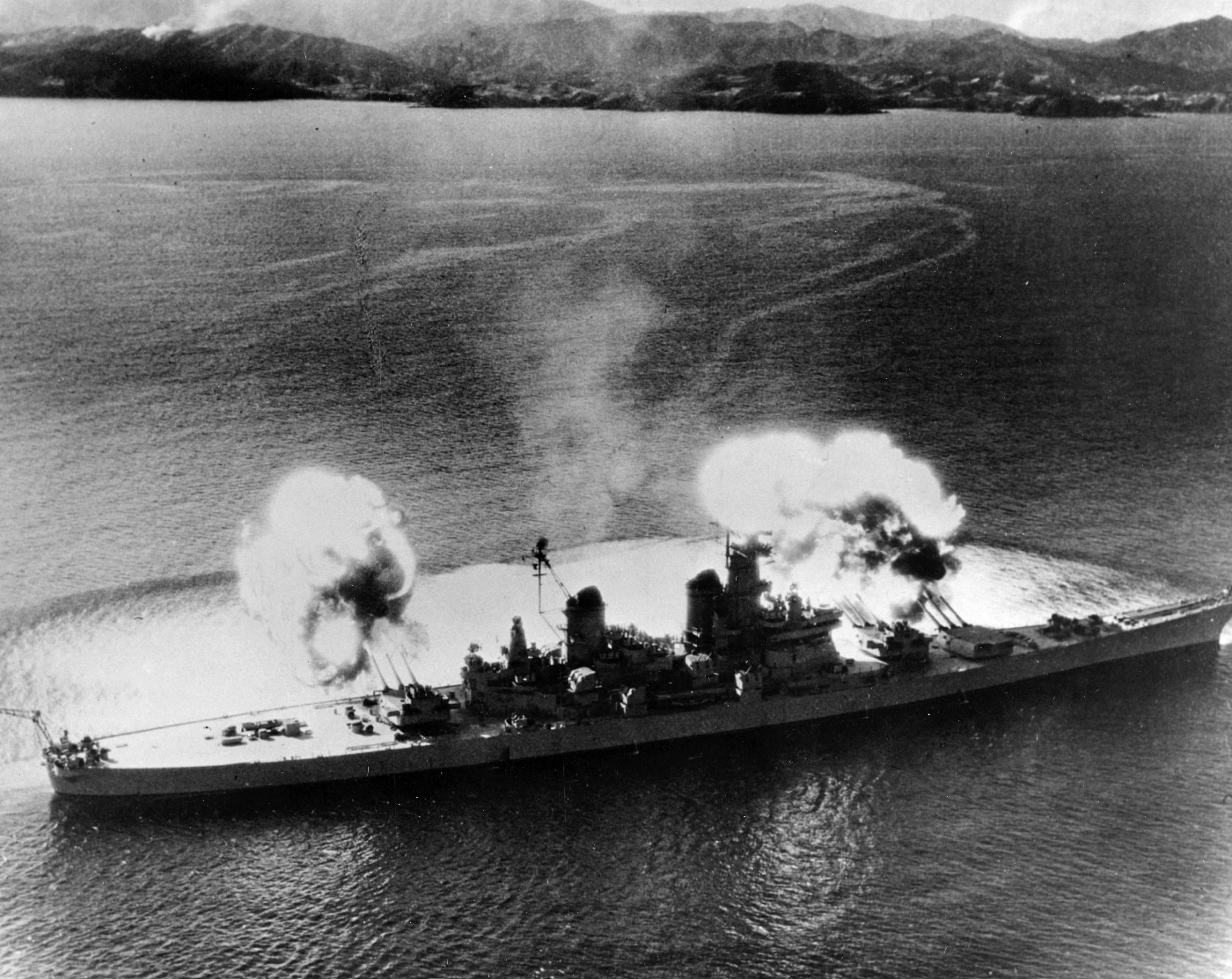
USSNew Jerseyfires a full 16″ gun salvo at North Korean troops near the 38th parallel. Smoke from shell explosions is visible ashore in the upper left corner of the photo. Image: U.S. Navy
One of the boldest plans would bring theIowa-class ships back to the fleet.
All fourIowa-class battleships were updated and returned to active duty in the 1980s.
The first was the USSNew Jersey,which was recommissioned in December 1982.
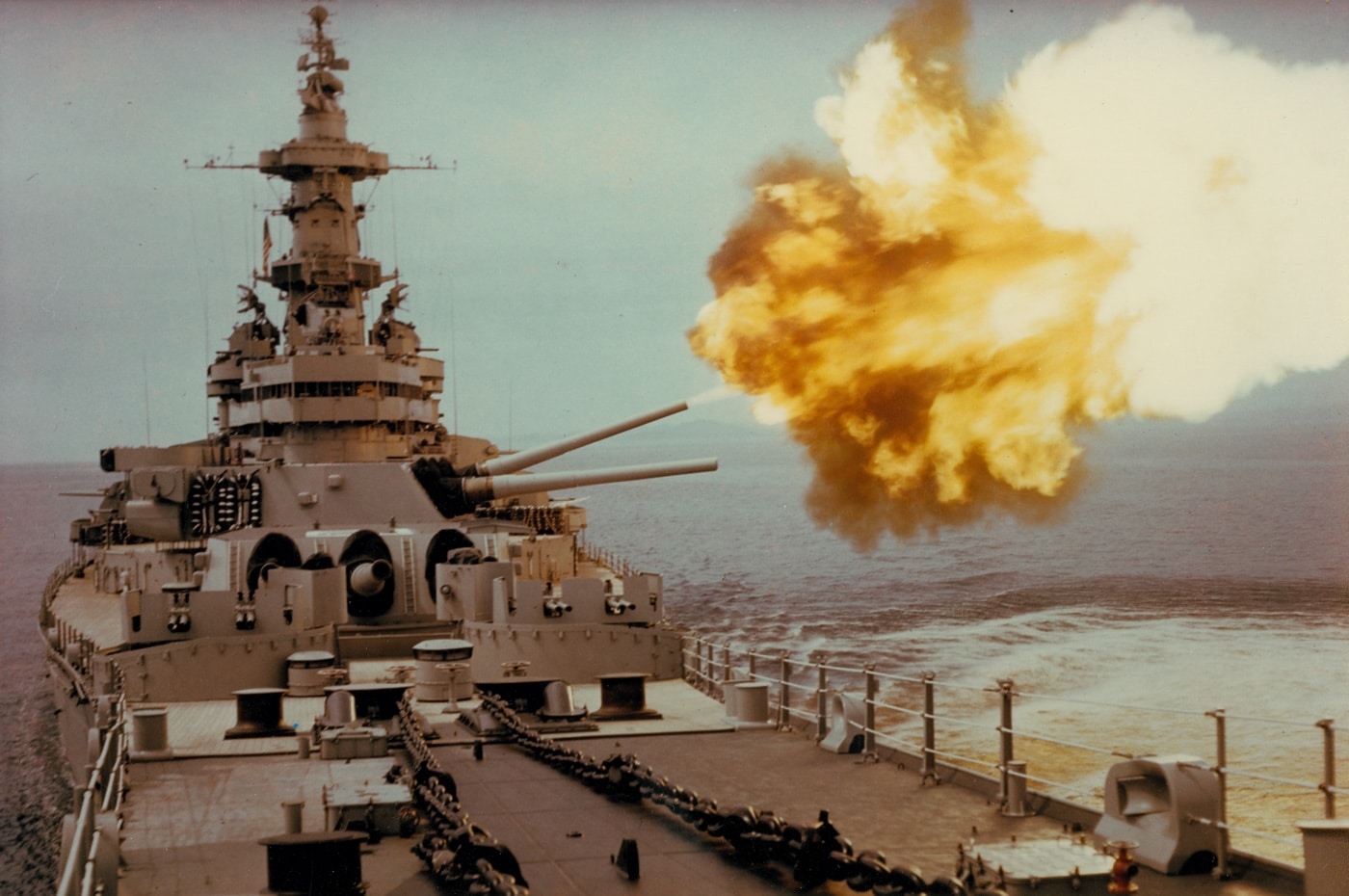
USSIowafires a 16″ shell toward a North Korean target in mid-1952. The gun turrets could independently elevate and fire each gun. Image: U.S. Navy
TheIowareturned to duty in 1984, with theMissouriandWisconsinfollowing in 1986 and 1988, respectively.
During the 1980s, the ships continued to fill important roles on the world stage.
The USSNew Jersey, for example, provided fire support to U.S. Marines in Lebanon.
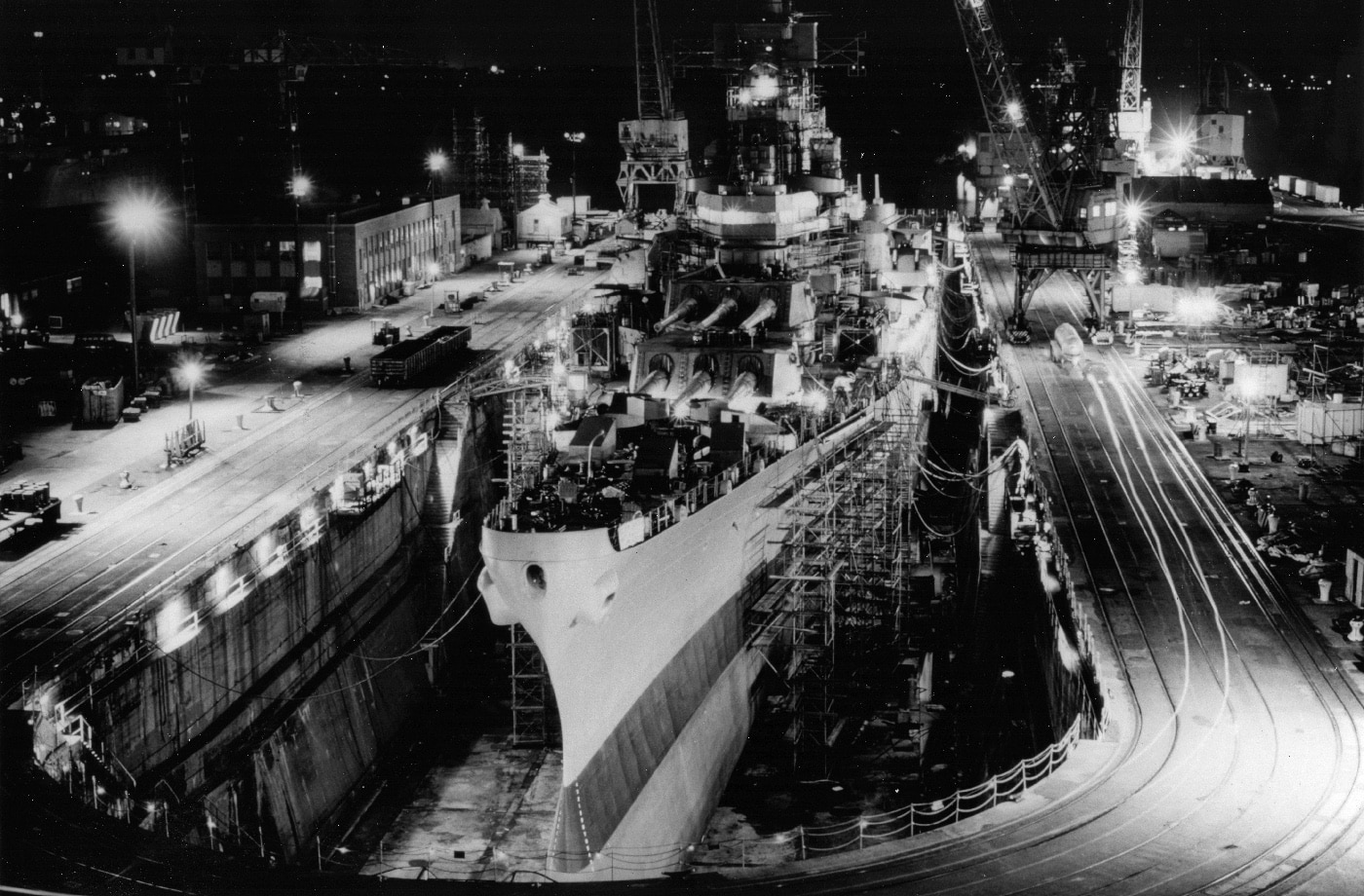
Floodlights illuminate the battleship USSNew Jerseyas she rests on blocks in Drydock Number Three at the Philadelphia Naval Shipyard during overhaul in November 1967. Image: U.S. Navy
Some of the first cuts were to theIowa-class battleships.
On paper, smaller, cheaper ships appeared to deliver firepower equal to or greater than the battlewagons.
TheMissouriwas the last battleship decommissioned when it exited active service in March of 1992.
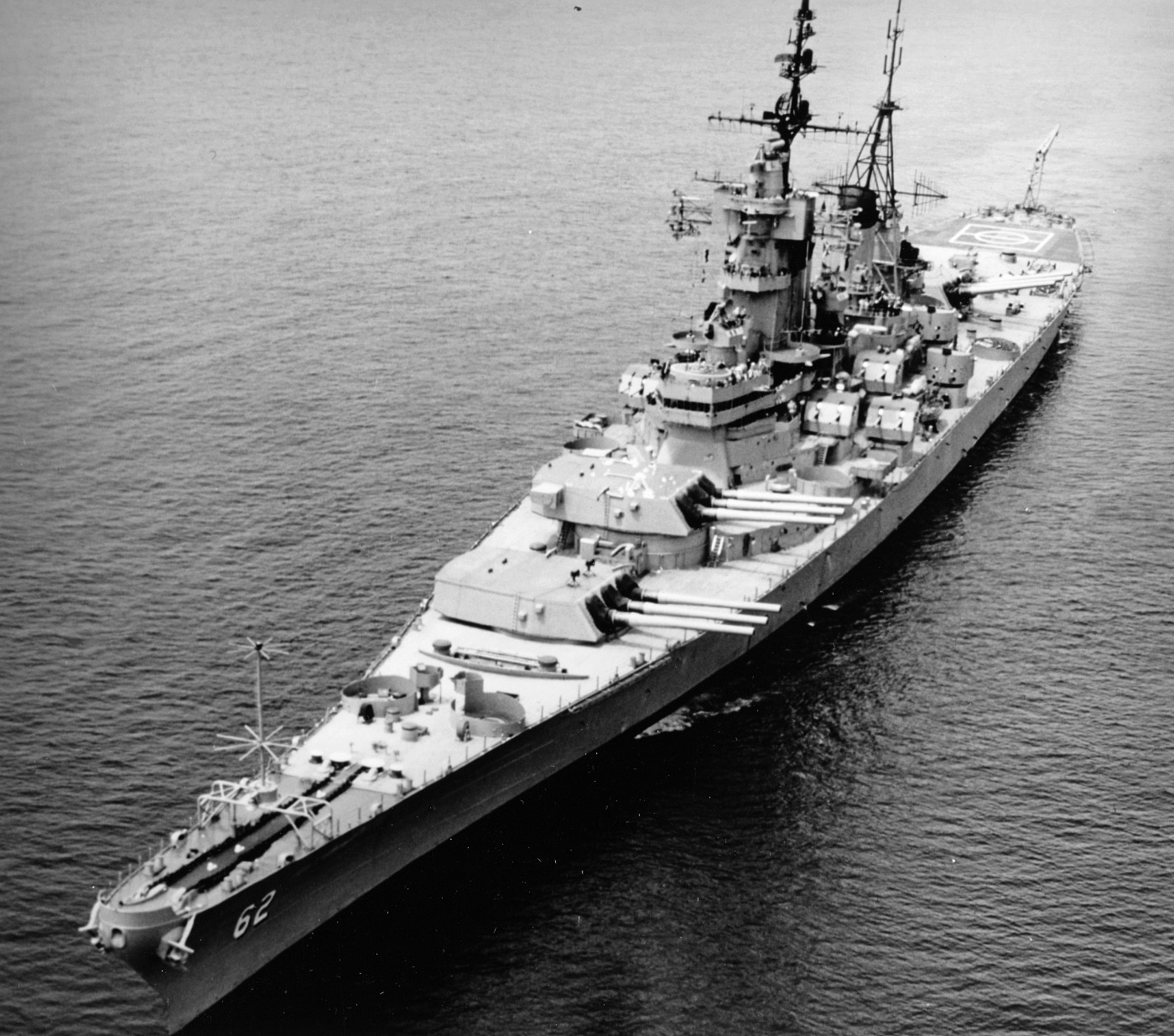
The USSNew Jerseyunderway in the Atlantic Ocean after recommissioning in 1968. It joined U.S. forces in Southeast Asia to support ground operations defending the Republic of Vietnam. Image: U.S. Navy
Fortunately, none of the battleships were sold for scrap or sunk as artificial reefs.
Instead, each has been preserved as a museum ship.
They are located around the country at:
Each ship is maintained by volunteers with funding through public donations.
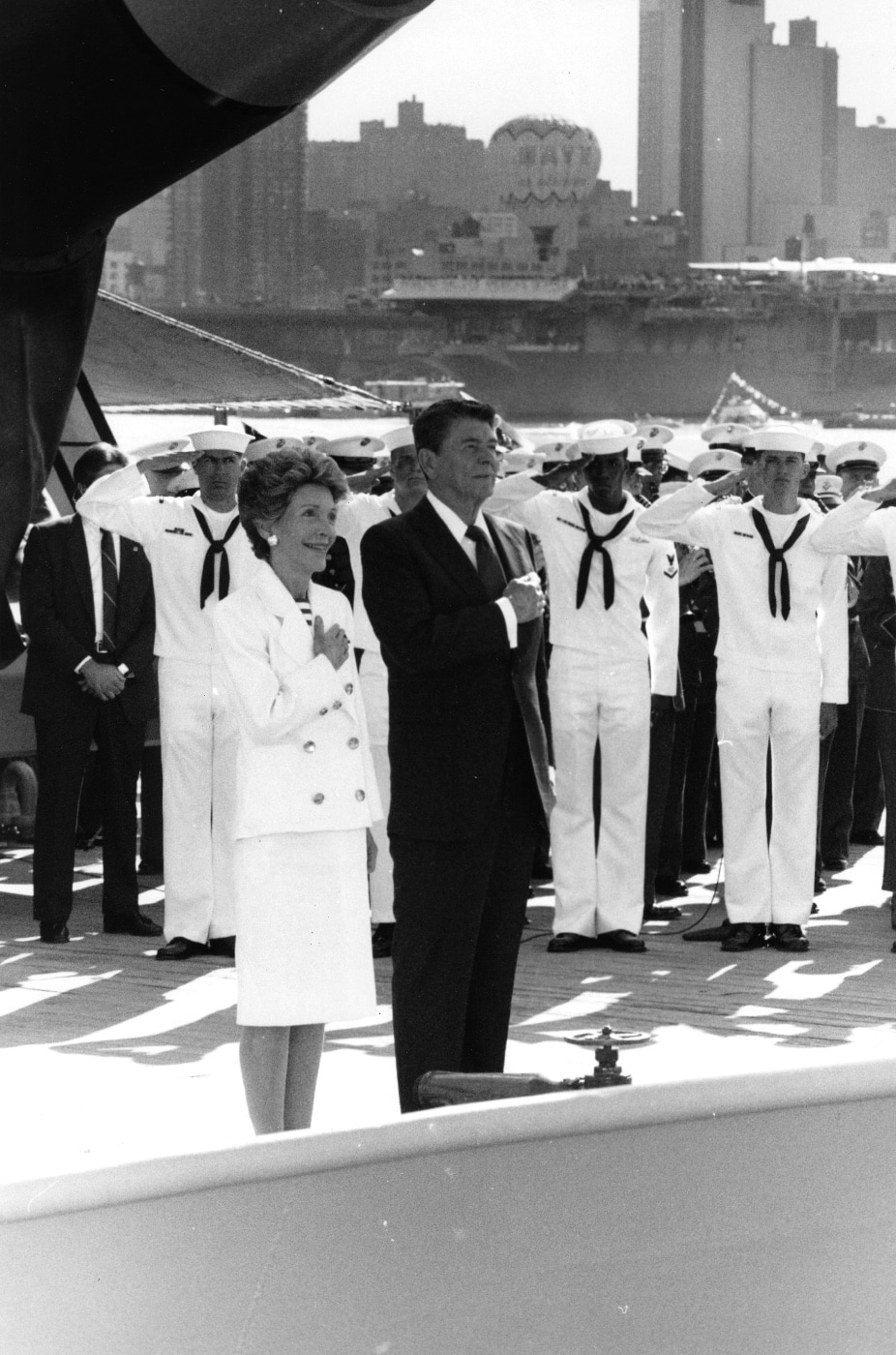
On July 4, 1986, President Ronald Reagan and First Lady Nancy Reagan on board the battleship USSIowahonor the flag during celebrations commemorating Independence Day. Image: U.S. Navy
If you have the means, all of them would appreciate your help in preserving their important history.
Return to Active Service?
In theory, yes.
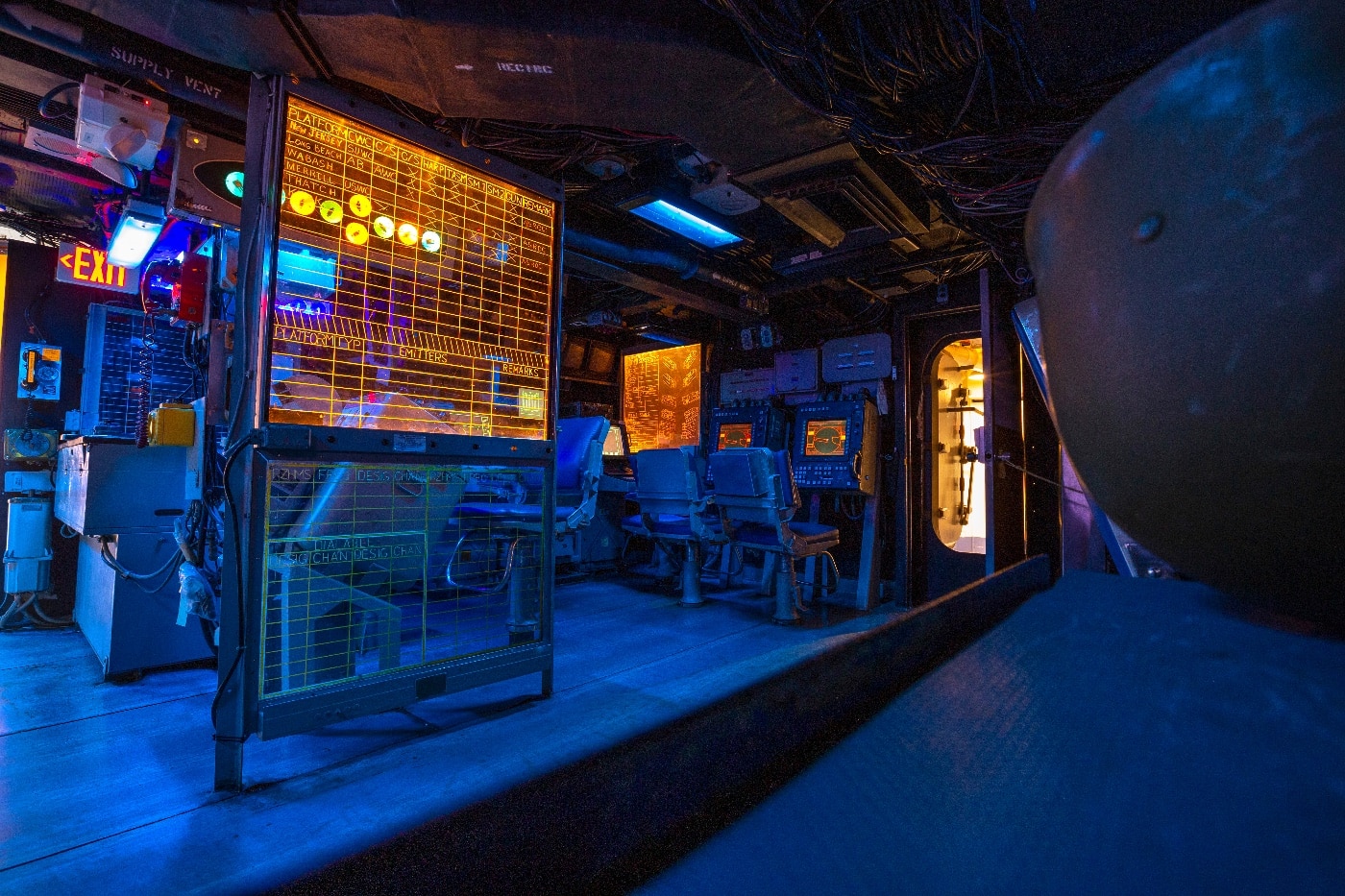
This is how the Combat Engagement Center on the USSNew Jerseylooked after it was recommissioned in December 1982. Image: Mark C. Olsen/New Jersey Department of Military and Veterans Affairs
The USSNew Jerseyand USSMissouricould be reactivated by the U.S. Navy during a national emergency.
It would not be fast, but it could be done.
Returning a battleship to active duty is less likely with every passing day.
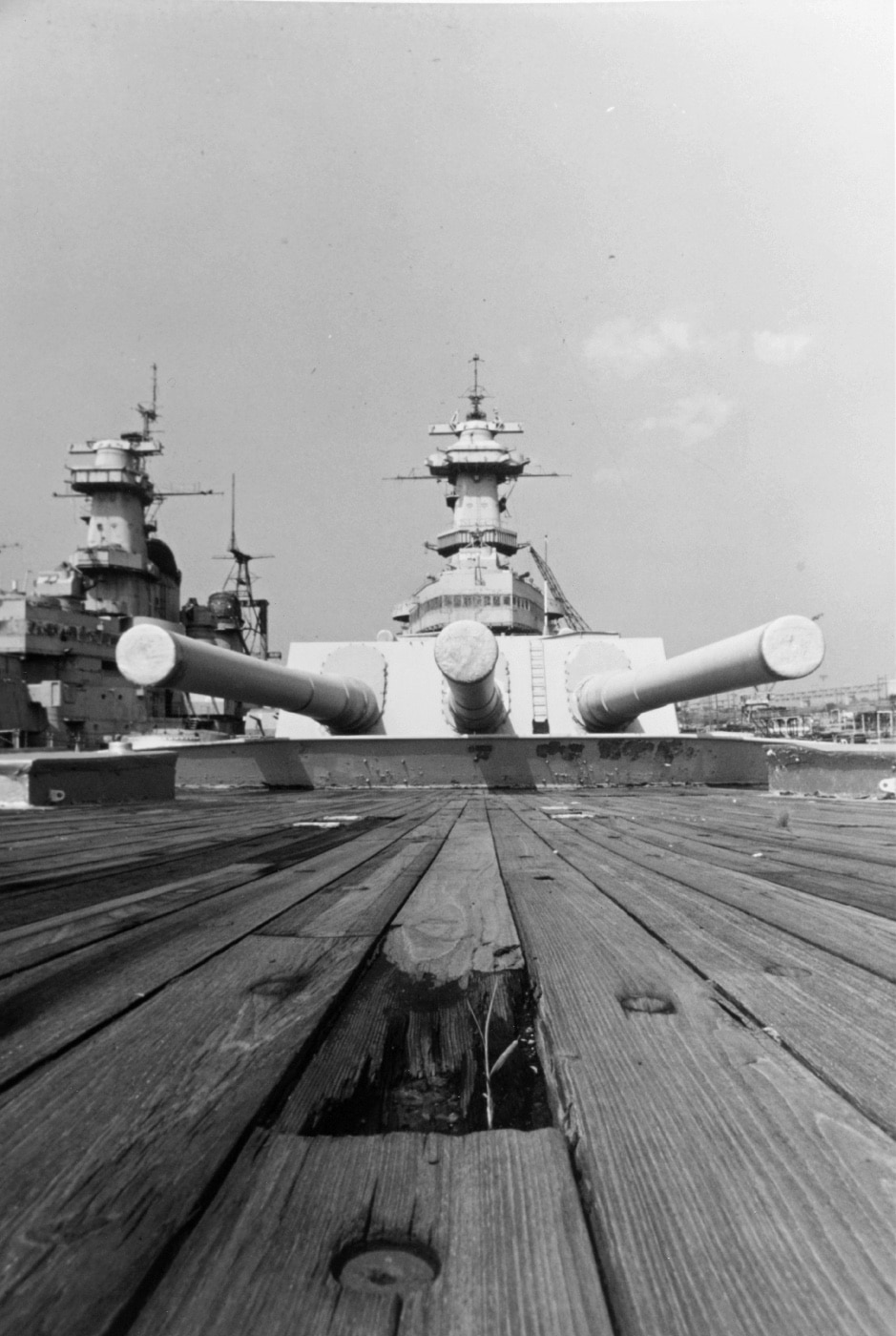
Iowa-class battleships languished in the mothball fleet during the 1970s. A shoot of grass grows from a damaged deck plank on the USSIowaat the Philadelphia Navy Yard, 1978. Image: U.S. Navy
Several years back, I visited the USSWisconsinin Norfolk, Virginia.
Simply being there can give you a feel for history that a dozen books cannot.
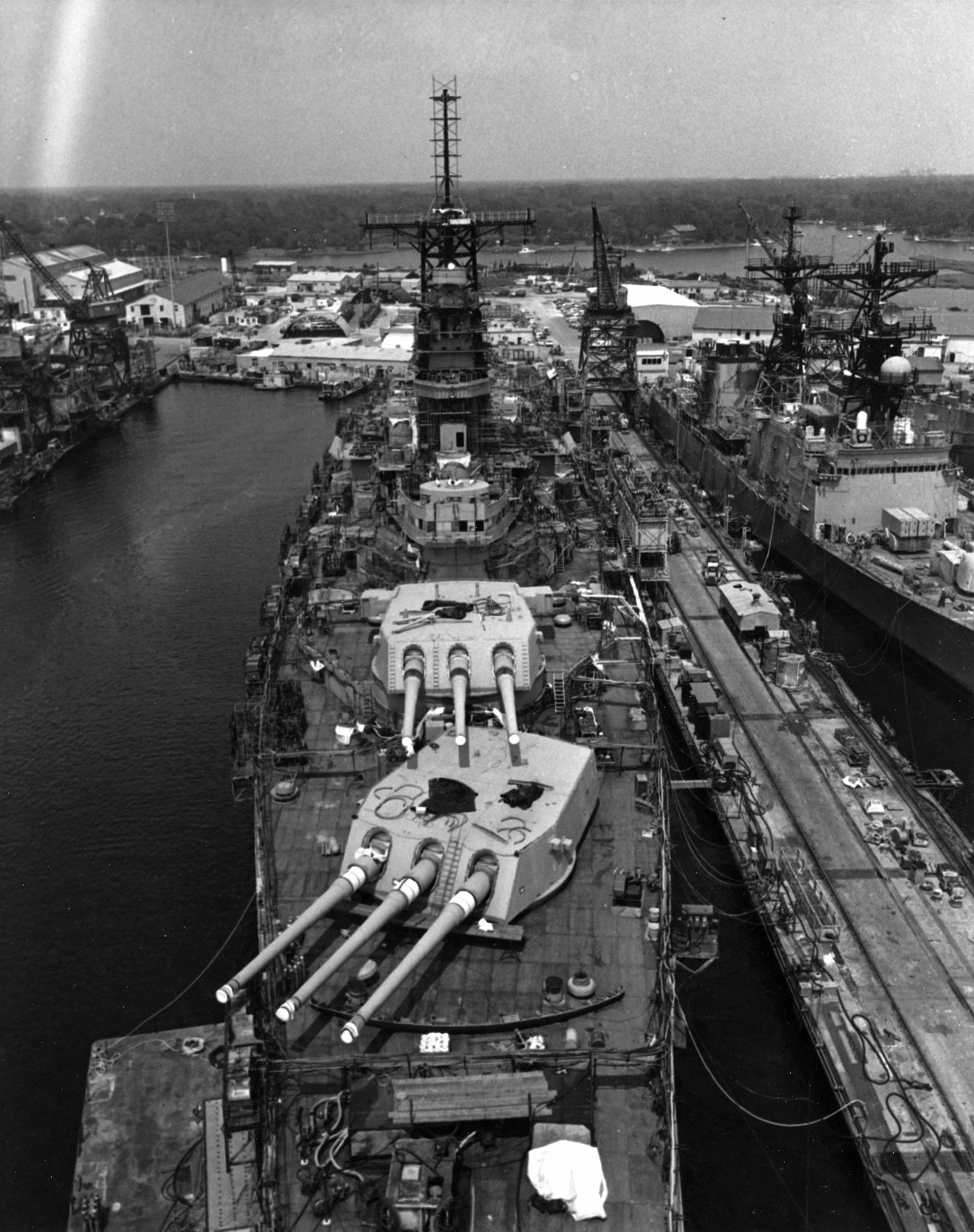
A June 1983 high angle view of the battleshipIowain port at Pascagoula, Mississippi. TheIowawas undergoing conversion and repair prior to being recommissioned. Image: U.S. Navy
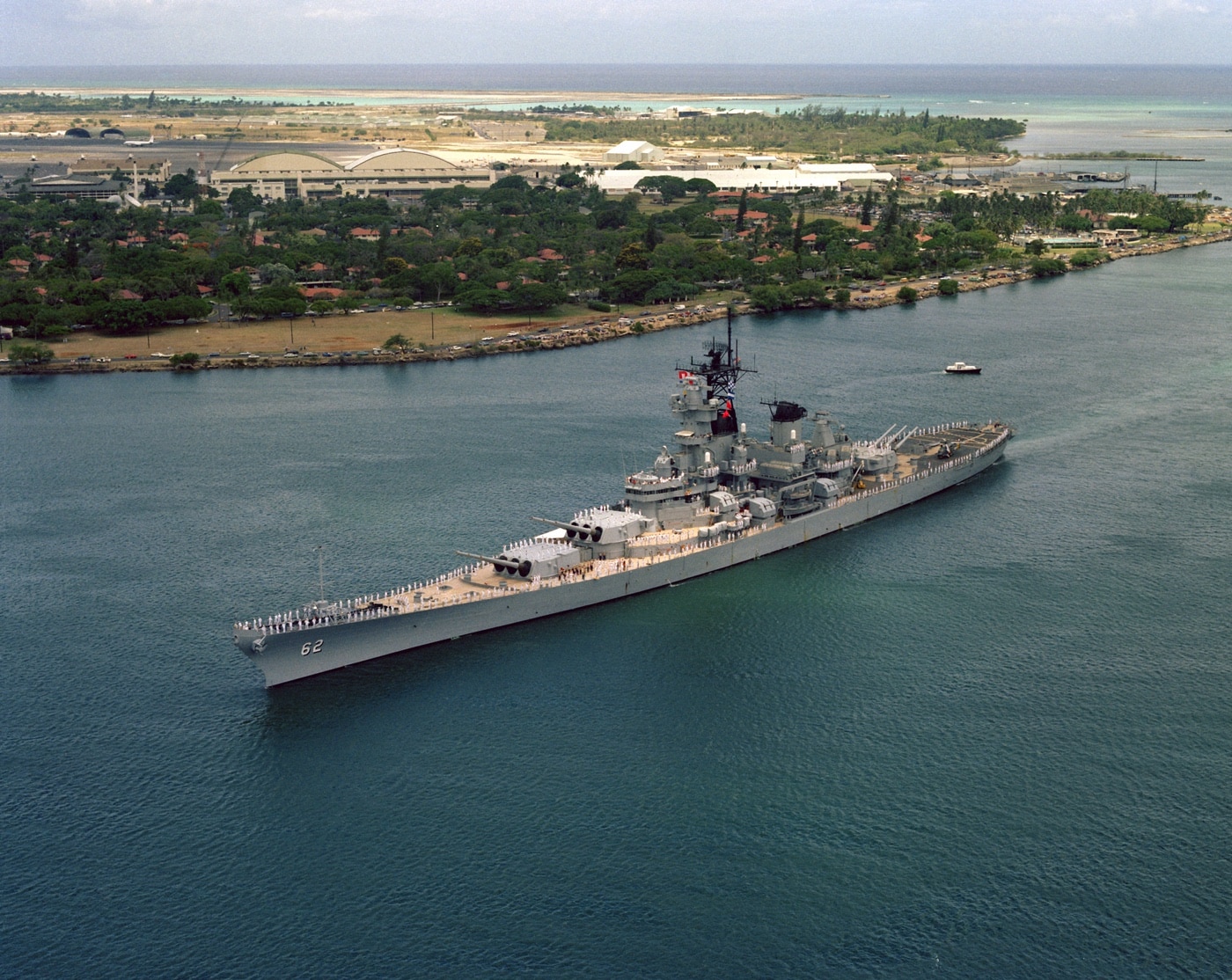
A port bow view of the recently re-commissioned battleship USSNew Jerseyas it enters Pearl Harbor, Hawaii during May 1986. Image: NARA
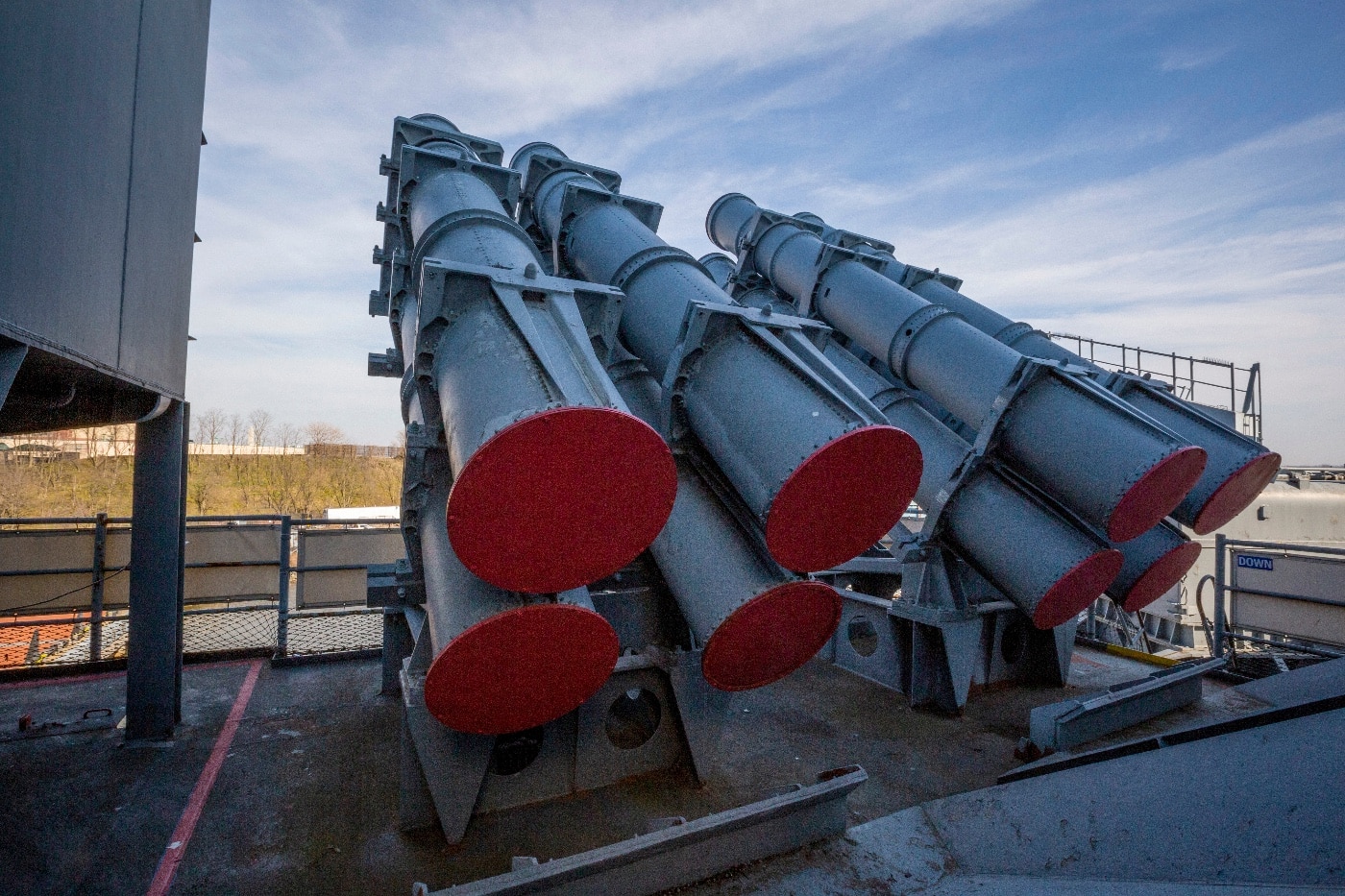
Two of the four Harpoon anti-ship cruise missile launchers on the USSNew Jerseycurrently in the care of the Battleship New Jersey Museum & Memorial, berthed at Camden, N.J. Image: Mark C. Olsen
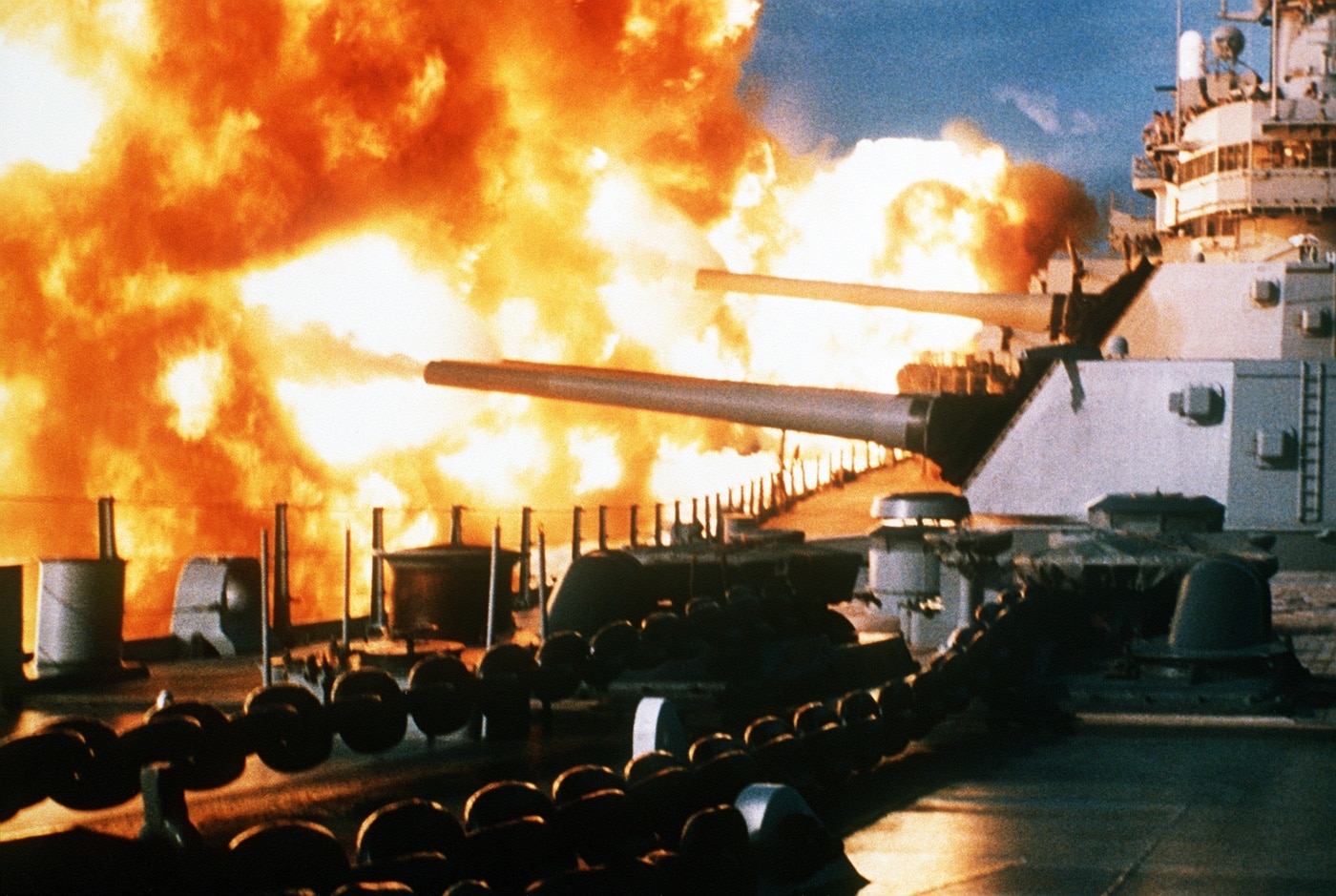
USSNew Jerseyfires a salvo from her 16″ guns in support of U.S. Marines during a deployment off the coast of Beirut, Lebanon. Image: PH1 Ron Garrison/U.S. Navy
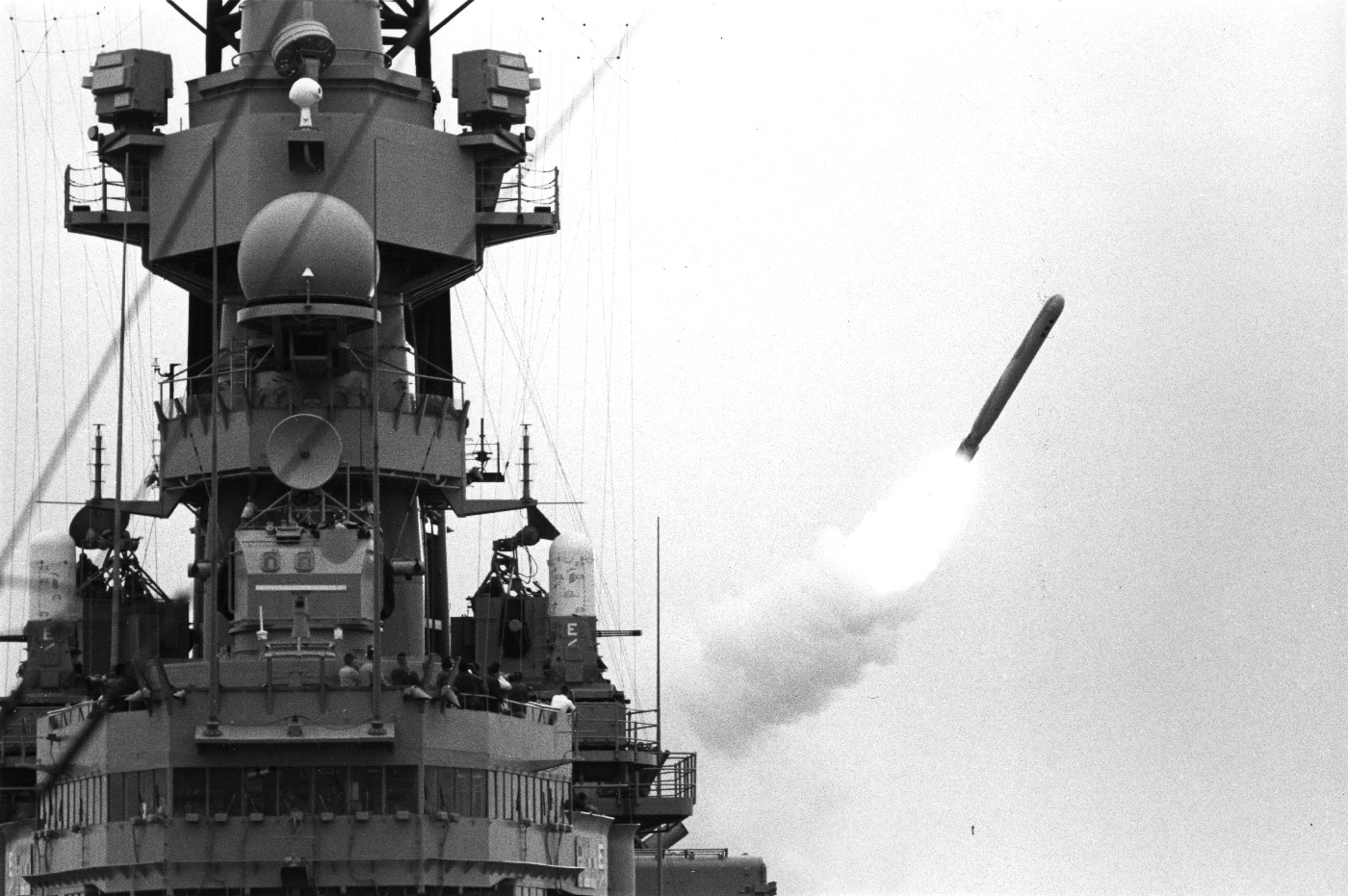
A BGM-109 Tomahawk land attack missile is fired toward an Iraqi target from the battleship USSMissouriat the start of Operation Desert Storm, January 1991. Image: U.S. Navy
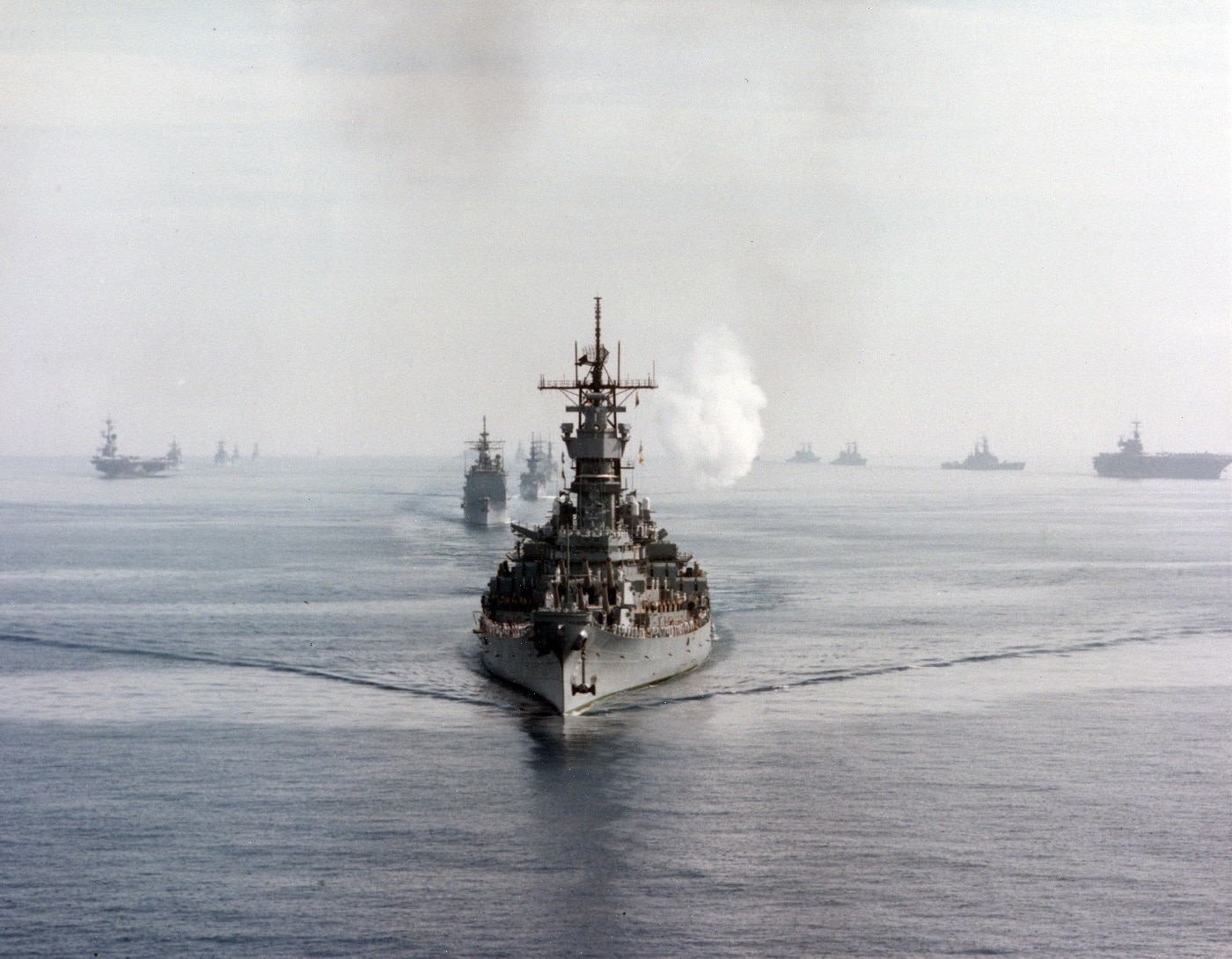
The USSIowaleads its battle group into Sicily. The aircraft carrier USSCoral Sea(CV-43) and its battle group are at left; the aircraft carrier USSSaratoga(CV-60) and its battle group are at right. Image: NARA
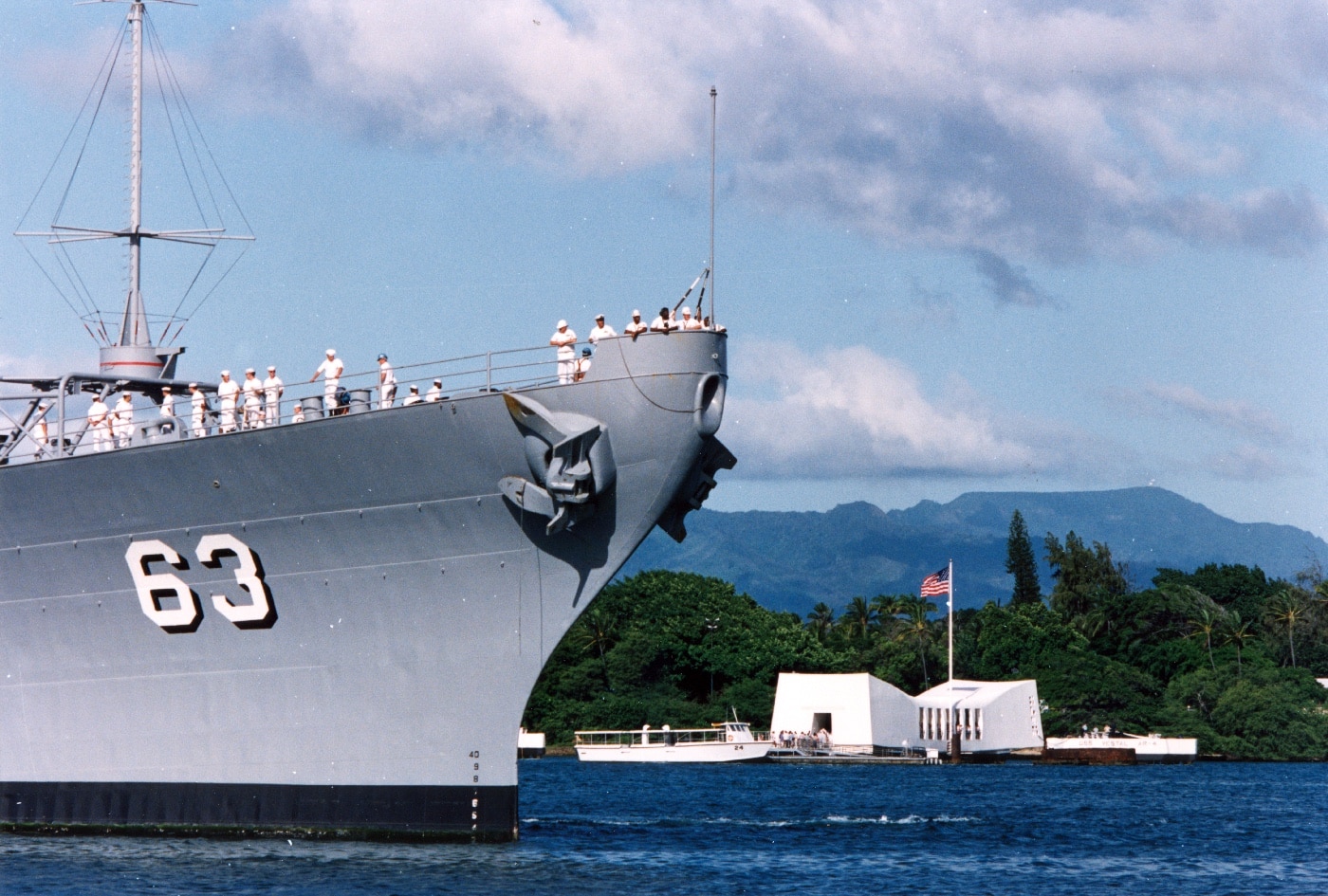
USSMissouripasses the USSArizonaMemorial as it arrives at Naval Station Pearl Harbor on Survivor’s Day, 1991. TheMighty Mowas decommissioned a few short months later. Image: U.S. Navy
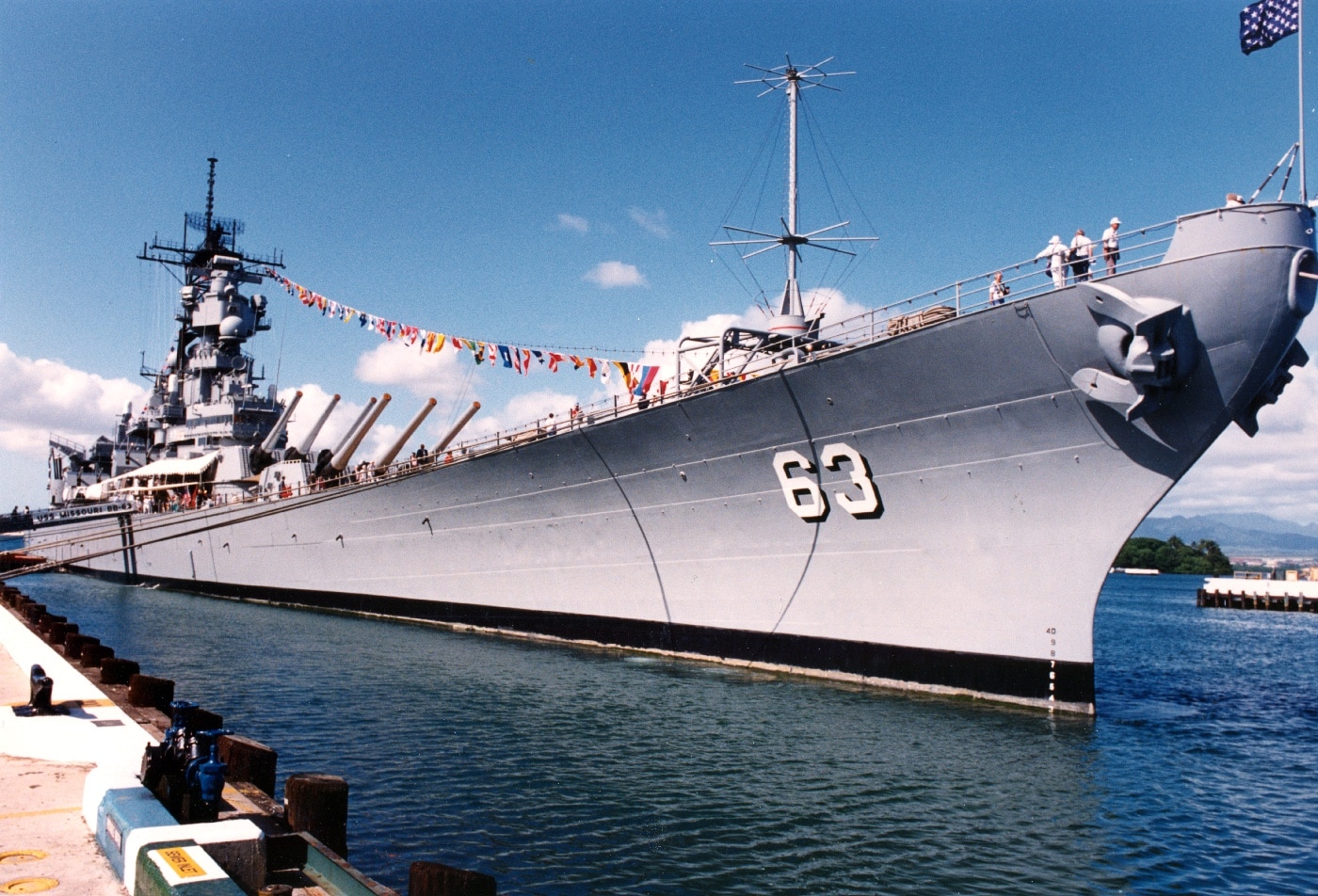
The USSMissouristands moored to a pier at Naval Station Pearl Harbor, Hawaii. Missouri arrived to take part in the observance of the 50th anniversary of the Japanese attack on Pearl Harbor. Image: U.S. Navy
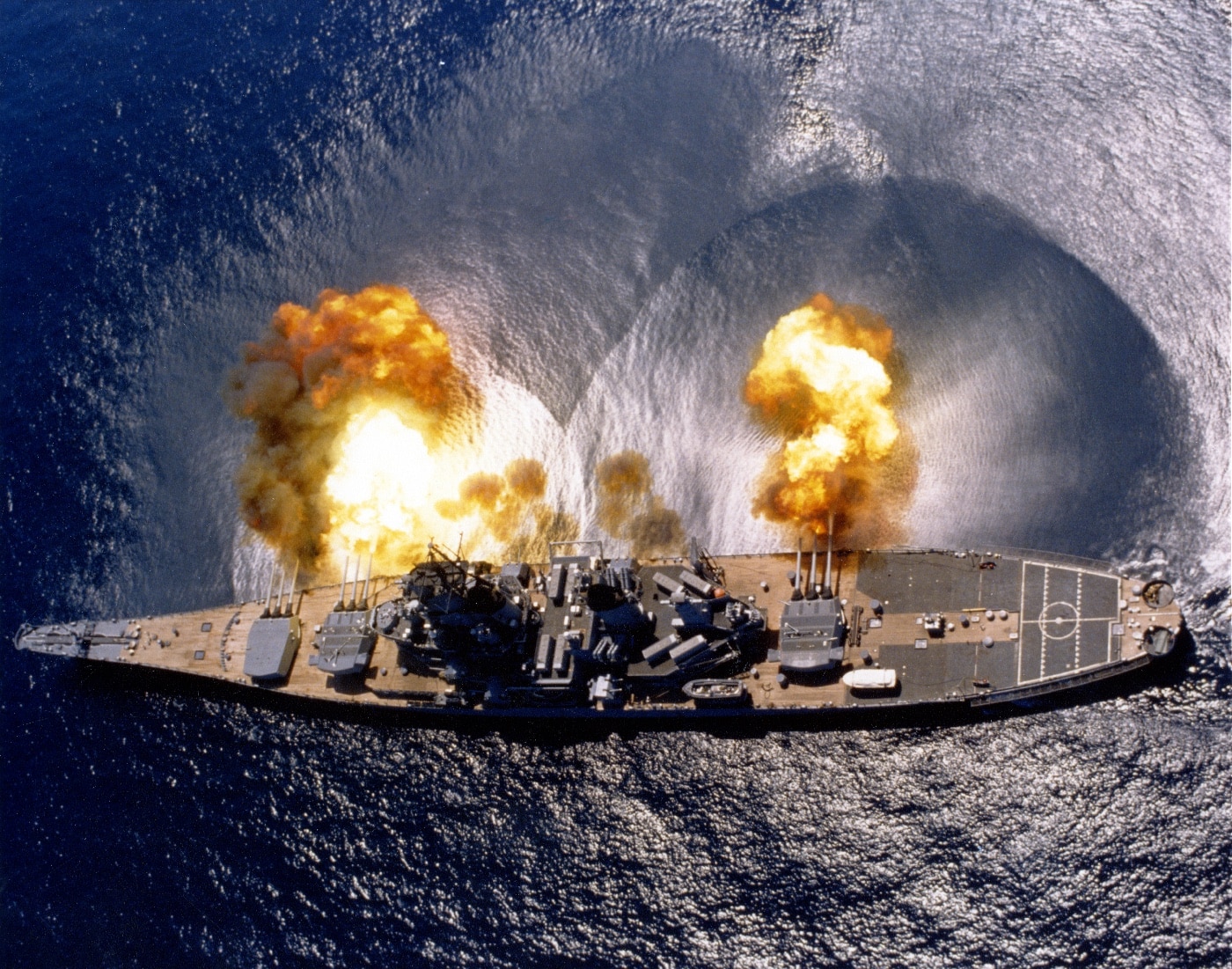
The USSIowafires a full broadside of nine 16″ and six 5″ guns during a target exercise near Vieques Island, Puerto Rico in July 1984. Image: PHAN J. Alan Elliott/U.S. Navy
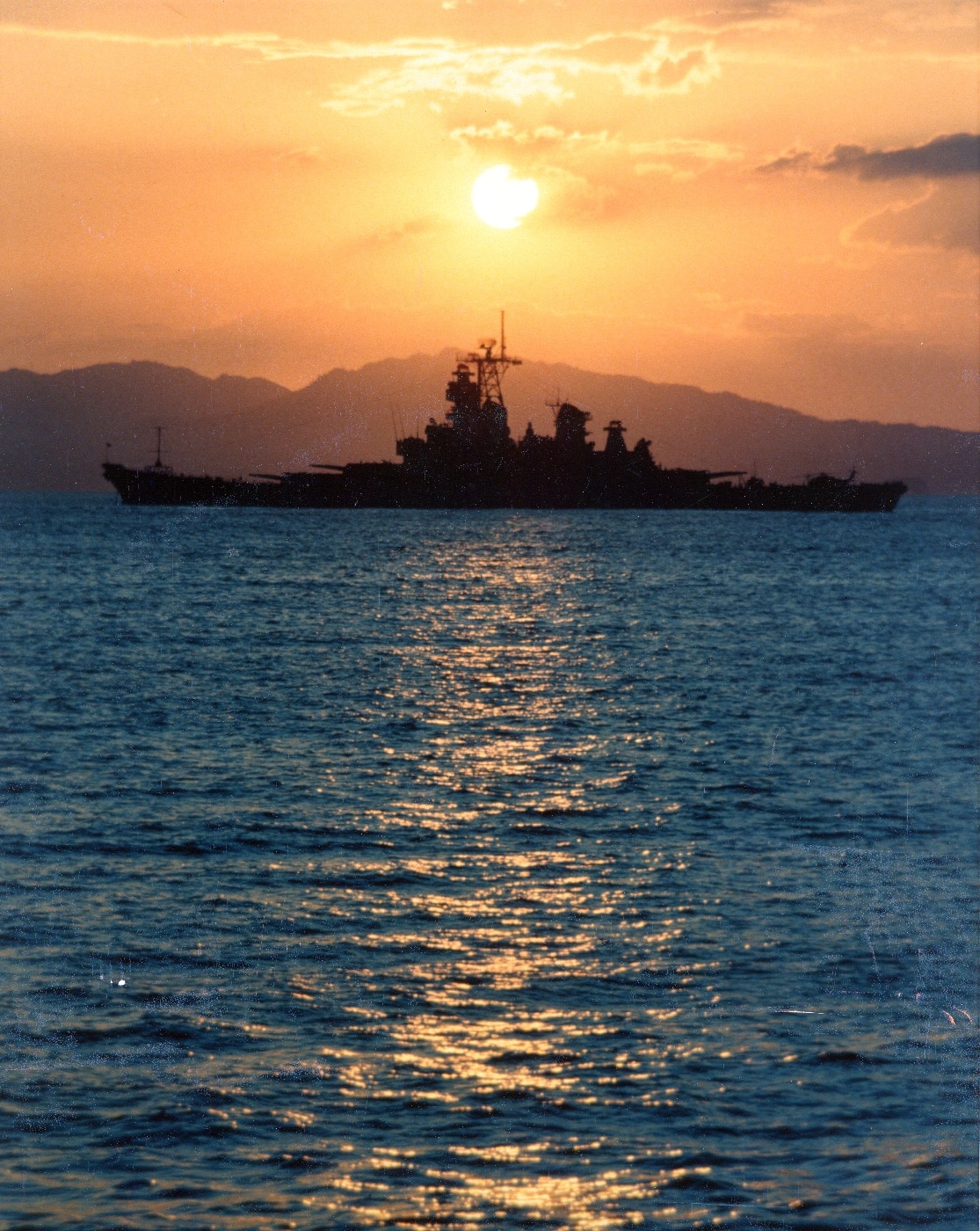
A port side view of the battleship USSIowaat sunset, moored off Puerto Caldera, Costa Rica. Image: DoD




